





INDIAN LINK
PUBLISHER
Pawan Luthra
EDITOR
Rajni Anand Luthra
ASSISTANT EDITOR
Sheryl Dixit
MELBOURNE
Preeti Jabbal
CONTRIBUTORS







INDIAN LINK
PUBLISHER
Pawan Luthra
EDITOR
Rajni Anand Luthra
ASSISTANT EDITOR
Sheryl Dixit
MELBOURNE
Preeti Jabbal
CONTRIBUTORS
As we head into the final month for 2012, it is perhaps a good time to take stock of the year about to pass.
ADVERTISING MANAGER
Vivek Trivedi 02 9262 1766
ADVERTISING ASSISTANT
Nitika Sondhi 02 9279 2004
DESIGN
Danielle Cairis
Proud members of:
Indian Link is a fortnightly newspaper published in English. No material, including advertisements designed by Indian Link, maybe reproduced in part or in whole without the written consent of the editor. Opinions carried in Indian Link are those of the writers and not necessarily endorsed by Indian Link. All correspondence should be addressed to Indian Link
Level 24/44 Market St, Sydney 2000 or GPO Box 108, Sydney 2001
Ph: 02 9279-2004 Fax: 02 9279-2005

Email: info@indianlink.com.au
www.indianlink.com.au

For the Indian community in Australia, this time last year there was a buzz in the air with the much awaited arrival of the Indian cricket team. Team Blue did arrive down under but rather than the tigers of world of cricket, they were more like lamb who were slaughtered by a mechanical and professional Australian cricket team. Their pathetic display on the field - and arrogance off it - made it all a sad episode indeed for cricket lovers from the sub continent. As we go to print, the Indian cricket team has just been thrashed in India by England by 10 wickets. The problem it seems, dear friends, is not in our stars but in ourselves that we are underlings, to paraphrase a well known saying. Aging stars, lack of vision by decision makers and impotent attitudes by people who matter, are all part of the decay. And yes, this can be carried across to the politics of India. It has been a year when the common man has become shriller in his demands for
the Indian politicians to clean up their act. Prime Minister Manmohan Singh featured on the cover of the influential Time magazine as a leader without a vision. While the Indian media reacted in its predictable way by featuring US President Barack Obama on its cover as a useless leader, the point still is that India with all its promises has consistently failed to reach the heights which it has the potential for. With GDP growth declining, and inflation high, the only money being made is by the politicians. In spite of top rating television shows on social issues by well-respected film maker Aamir Khan, it seems that there is no desire by the powers-that-be to create any effective change. It is over two years since the sagas of Commonwealth Games corruption scandals surfaced; there is still to be any punishment meted out to the guilty parties who brought so much shame on the nation.
In Australia, the strength of the Indian community is being noted and politicians are falling over each other to be present at India-centric functions. From the Federal side, both Prime Minister Gillard and Opposition leader Abbott are playing tag with each other. As soon as one confirms their attendance for a function, the other also finds time to be available for the function. State Premiers in the two big states of Victoria and New South Wales also attend community functions
regularly, and trade missions to India are the flavour of the year as they work hard to draw out Indian investment to their state. The Indian community, while enjoying the photographic opportunities with the leaders, has not been able to get access to their wallets to obtain funding for projects which can help the local community. Perhaps with the elections due in 2013, the Indian local leaders can lay the right groundwork with the political leaders to make grand announcements at their functions.
For the Australian Indian community, 2012 was a year in which we continued our growth as a community. While numbers of students were down and businesses catering to them suffered, there was an influx of professionals on 457 visas as the government worked hard to fill in the skills gaps. We continued with our massive Holi and Diwali celebrations; overseas singers and stars came to entertain us; talk fests with visiting intellectuals took place; local music and dance performances kept the entertainment levels high. Community groups mutated and new associations were formed, presidents and leaders in some changed, in others they clung to their positions to continue with their claim to fame.
Yes, the more things change, the more they remain the same.
SPIRITUAL
Ramakrishna Sarada
Vedanta Society of NSW activities
Sun 15 Dec 5.30-7.30pm Avijit Sarkar & Friends. Free early evening concert of devotional songs. Complimentary tea/ coffee, sweets & savouries provided. Venue: Vedanta Hall, 15 Liverpool Road, Croydon. Details 02 9745 4320 or email: admin. saradavedanta@bigpond. com
Website: www. saradavedanta.org
VHP Australia
VHP Australia is seeking volunteer teachers to teach Hindu Dharma in Public Schools (approved by the Dept of Education).
Training and materials will be provided. Details Akila Ramarathinam 02 8814 7016.
Sydney Veda Patasala is open for children and adults. It involves Vedic chanting and Sanskrit language. Classes are held at on Sundays Baulkham Hills, Carlingford, Moorebank and
Westmead. Details Sri Subbuji 0425 284 501.

Bala Samskara Kendra (Sanskrit Language, Indian Culture and Heritage School for children)
operates out of Toongabbie, Moorebank, Hornsby and Flemington. Students learn Sanskrit language (writing, reading, speaking and reciting poems). Details
Rohini Srinivasan 02 9863 3067.
Chinmaya Mission events
Tapovan Jayanthi and Geeta
Jayanthi
Sun 23 Dec 8.00am to 11.30am, Chinmaya Sannidhi Ashram, 38 Carrington Road, Castle Hill
Chinmaya Annual Cricket
Match
Sun 30 Dec 8.00am – 12 noon, Charles MacLaughlin Reserve, Cnr Chapel Lane & Crestwood Drive, Baulkham Hills
‘Mahabharata Day’ Retreat
Mon 31 Dec 9.00am – 2.00pm
Chinmaya Sannidhi Ashram, 38
Carrington Road, Castle Hill
New Year’s Eve Program
Mon 31 Dec Hanuman Chalisa
chanting, bhajans, arati.
11.30pm to midnight. Chinmaya
Sannidhi Ashram, 38 Carrington
Road, Castle Hill
New Year event
Tue 1 Jan Chanting of the Vishnu Sahasranama and Pooja 9.00am - 11.30am followed by lunch prasad. Chinmaya Sannidhi Ashram, 38 Carrington Road, Castle Hill
Details 02 8850 7400 or 0416 482 149.
International Day of People with Disability
Sat 15 Dec Vishva Hindu Parishad of Australia (Social Services Foundation) is celebrating International Day of People with Disability by organizing a free workshop and fun afternoon with dinner for people with disability of all ethnic backgrounds, their carers, frail and elderly. Pennant Hills Community Centre Hall, Library building (at the junction of Yarrara Road and Ramsay Road, Pennant Hills, few metres from Pennant Hills Station). 3.00 pm onwards. The event includes presentation and inspiring speeches by special people, mild yoga, music, dance, games etc. Details Akila 02 8814 7016.
Tue 11 Dec The Chanukah at the Bay Celebration is an annual event which facilitates community participation amongst a diverse sector of the multicultural community. The event, one of the largest on the Jewish calendar in NSW, welcomes multiple faiths and celebrates diversity through the universal symbolism of Chanukah; that is, the celebration that all people can add light to the world around them, and that light triumphs over darkness. This family oriented event is at Steyne Park, William Street, Double Bay, 4.00pm to 9.00pm, and includes love band, shows, clowns, amusement park rides, pony rides, bungee jumping, BBQ, finishing with a spectacular Fireworks display
Republic Day/Australia Day
Sat 19 Jan 2013 Federation of Australian Indian Associations (FAIA) invites all community members and their families to celebrate Indian Republic at Bowman Hall, Campbell Street, Blacktown, 6.00 pm onwards. Admission is free. For sponsorship, souvenir
advertisements and cultural participation contact: Neera Srivastava on 0415 807 520 or Uma Swamy on 0468 341 907.
Going to the Mahakumbh next year?
Australian independent documentary film-maker Mark Gould is searching for Hindu Australians who intend to go to the upcoming Maha Kumbh Mela at Allahabad (Prayag) in Feb 2013.
ABC TV’s religious program Compass (6.30pm Sundays) is keen to tell the story of this sacred journey and what it means to the devotees. The subjects of the film would need to be prepared to share their stories, their bhakti and relationship to their faith on camera in a documentary focussed on this special pilgrimage - why they are making it and what they hope to gain from this great event. The ideal subjects would be devout Australian Hindusindividuals or a family who are articulate about their faith and keen to reconnect with their Hindu traditions. Details Mark Gould 0419 635 614 or email mark@BondiRocksMedia.tv


Pack small, pack light, take only what you need, know where everything is so that you can reach for it in the dark, repack everything. As Captain Dr Sandeep Bhagat was crossing off the list of things he needed to take to his deployment in Afghanistan, the mundane was being mulled over with some real concerns. Is it safe? Will the family manage? Who will take care of them? What if…?
All of these were very valid questions for a 37-year-old happily married father of two children who chose to join the Australian Army, and was off to do a stint in the war zone. As a qualified medical practitioner and palliative care specialist, Capt Bhagat was required to treat military personnel, civilians and Afghans in Tarin Kowt for two months, followed by a four month stint recently in the UAE and Kabul.
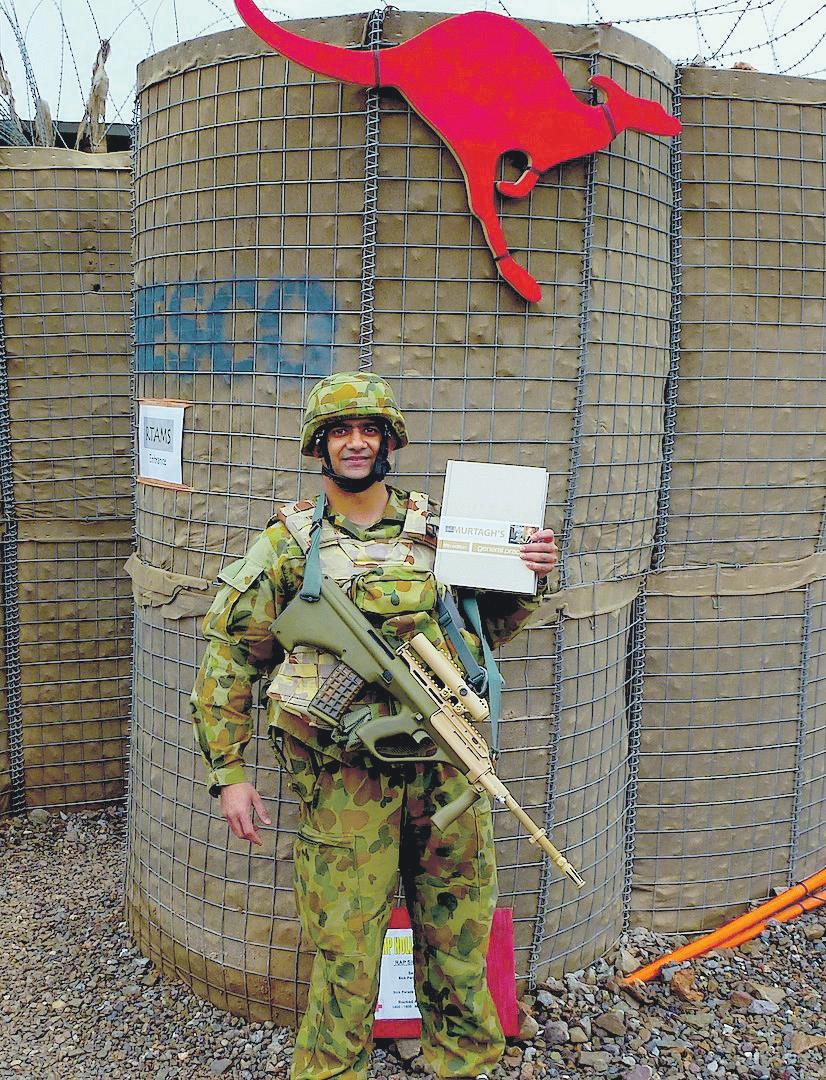
It may be difficult for many to understand, but Capt Bhagat was glad to go there. Experiences like these were the reason he joined the Army Reserve.
“My deployments gave me an enormous sense of adventure and a great opportunity to work with people from all walks of life,” said Capt Bhagat as he explained the reasons behind his readiness to work in this potentially hazardous environment. “I have always had a penchant for uniforms, it could be the influence of my grandfather who served in the Indian Army in World War II, or my relatives who chose the army as a profession”.
Being a Punjabi son, his inspiration comes from the Sikh Gurus, especially determination and the sense of sacrifice for others.
“It could also be due to the training I received as a cadet, in the prestigious Sainik School in Kapurthala, Punjab. I have always wanted to serve the nation. I migrated to Australia 12 years ago and went through the initial settling-in period, but I always knew I would end up in this uniform that is my pride and joy. It is my privilege to be able to the serve my adopted country both as a practicing doctor and as an Army Captain,” added Capt Bhagat with conviction.
“Like so many hard working Indians in Australia, our deeds bring respect to our motherland as well as the country we call our home now,” he stated.
As I spoke to Capt Bhagat in

the comfort of his lounge, he came across as an everyday family man who likes to play cricket with his two sons. As his story unfolded I saw the grit and determination that earned him the name ‘RocketPocket’ from his army mates.
“Most of the men I work with are bigger and taller than me,” he said disarmingly, adding, “I am not in the least bit daunted by this, though! I have a very strong physical fitness regime that holds me in good stead along with a seriously competitive streak that I developed during my days in Sainik School. I tend to be the first to clear most of the obstacle courses designed to test us, hence the nickname”.
Capt Bhagat, who has just returned from the Middle East Area of Operation of the Australian Defence Force (ADF), hails from the state of Punjab in India. He was born in Jalandhar and went to a boarding school in Kapurthala at the age of 10, going through strict military regimental schooling for the next 7 years. After his schooling he completed his MBBS from Government Medical College in Amritsar, and within five months of acquiring his medical degree, Capt Bhagat left India to live in Hamilton, New Zealand where his bride Harvinder (Rosy) had family connections. The young

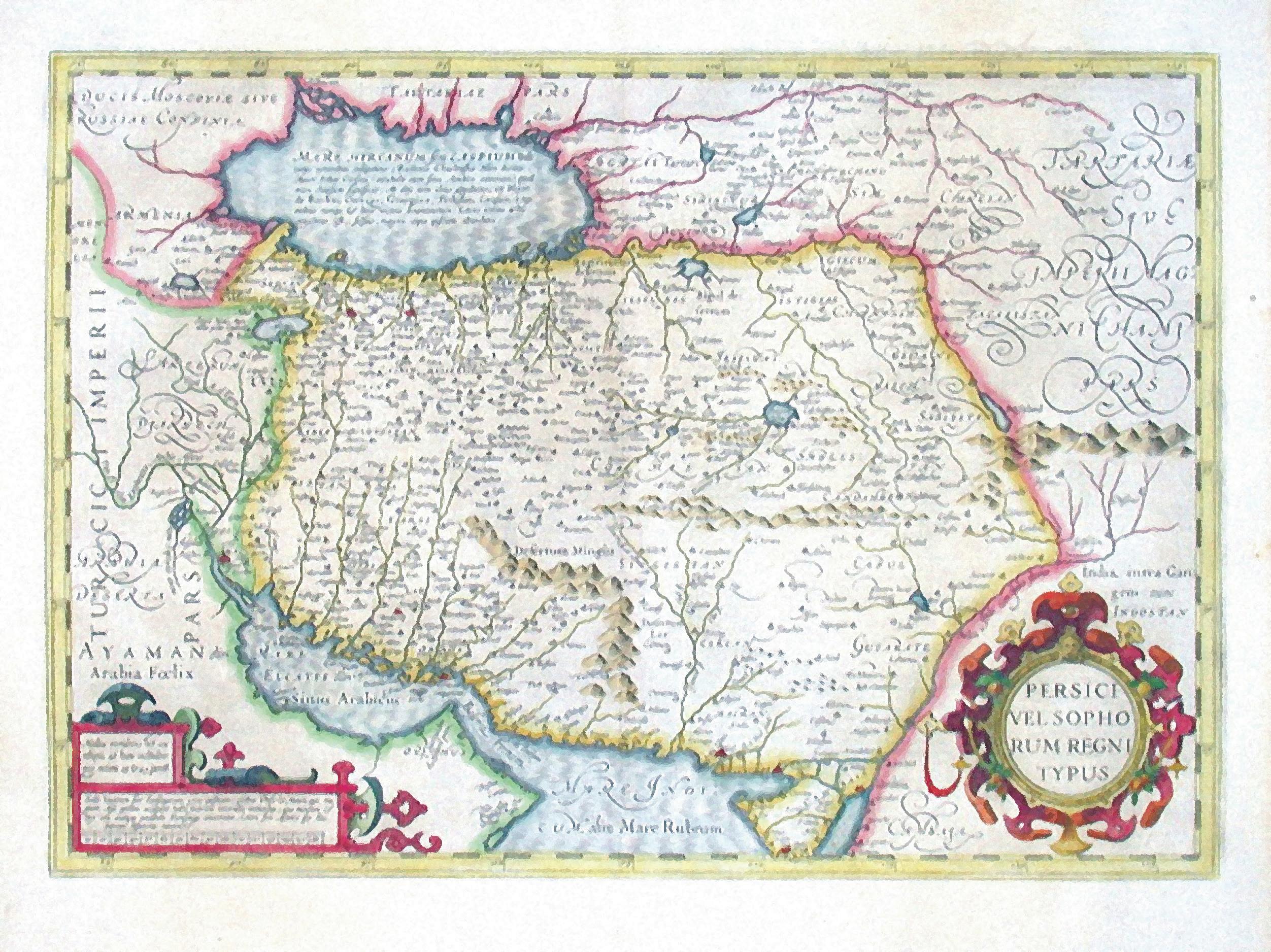
An enterprising doctor and inspirational individual carries forward the family legacy of bravery and honourPREETI JABBAL
doctor was keen on doing medical research and Melbourne appealed to him as a place that offered more potential in the medical field as well as a multicultural environment.
Capt Bhagat completed his GP training and got his first break as an advanced academic registrar at Monash University, a prestigious funded position towards medical academics and research. He started his own practice in Drouin in West Gippsland. But as he always had a passion for caring for the frail and elderly, Capt Bhagat left general practice to undertake specialist physician training in palliative care.

“The more you do palliative care, the more you love it. It is a very noble and humbling experience. I got interested in palliative care after a visit to an aged care centre as a GP. There I met a 94-year-old man from Britain whose inspiring story changed my mindset,” he continued.
“This retired Major who had served in the British Army at Amritsar reminded me of my grandfather. The genuine wishes and blessings that you get from the people who are affected and their families are things that money can never buy,” shared Capt Bhagat who is currently working as a Consultant in Palliative Medicine-Eastern Health and as a Sessional Primary Care Consultant in Dandenong Hospital ED.
Talking about his recent deployment in Afghanistan, Capt Bhagat claimed that bullets and bombs don’t discriminate.
“As a combat doctor, our skills are required to cure a common cold or simple ailment, to serious blast injuries. IEDs or home-made

destructive devices cause injuries to everyone, including their own people. It is horrific to see the destruction especially when it affects local children and women,” said Capt Bhagat as he shared his personal encounters during his time in Tarin Kowt previously, and in the Middle East and Kabul recently.
Describing his soujourn in Afghanistan Capt Bhagat said, “I will not go into specifics however in Afghanistan a typical day for us was very busy. Work days began at 0530 with morning PT, and we would finish not before 2300. As a doctor my day was filled with common general practice type issues, along with treating war injuries involving locals and coalition soldiers. We mainly stayed in the camp but we had opportunities to go out as well. Afghani workers on the base were very respectful especially when they learned I could communicate in Urdu. They have a special regard for Punjabis and Sikhs. My leisure hours were filled with exercise and more exercise, or chatting with my team mates. I spoke to my family once a week, sometimes more”.
And what was his most memorable experience?
“There were lots of experiences that I cannot elaborate on, however the most memorable ones were when I could serve our hard working diggers”.
A question that he is often asked is, was he ever scared for his life?
“My answer to that is, if I was, I wouldn’t have gone for the second time and I wouldn’t have offered myself for the third tour…”

He added after a thoughtful pause, “I do understand the dangers, though”.
With an impressive list of credentials to his name, Capt Bhagat was awarded the Australian Active Service Medal with International Coalition Against Terrorism (ICAT) Clasp, Afghanistan Campaign Medal and NATO Medal with International Security Assistance Force Clasp by the ADF between 2011-2012.

Capt Bhagat has served on the board of many medical and educational bodies and advisory committees. Despite all his commitments, he is also involved in improving the care of patients dying with advanced cancers in India, as a member of Australasia Palliative Link (APLI)’s Hamrahi Project. As part of their commitment to the cause, participating doctors provide free mentorship to Indian doctors caring for patients with advance cancers and illnesses in India. They also host visiting doctors from India to gain experience in managing pain management of advanced cancers.
When asked how he gets the time and energy to be involved with defence, medicine, altruism and still find time for family, Capt Bhagat shrugs philosophically. “I believe in the ancient adage: ‘Do all the good you can, by all the means you can, in all the ways you can, in all the places you can, at all the times you can, to everyone you can’. As a doctor I am fortunate enough to be able to offer comfort, and as a defence personnel I am brave enough to stand against challenge and controversy. These to me are the ultimate measure of a man in uniform, and that is why if I am offered another opportunity to serve in Afghanistan the answer will be ‘yes’ all over again,” he says confidently.
“Most
“As a doctor I am fortunate enough to be able to offer comfort, and as a defence personnel I am brave enough to stand against challenge and controversy”
“IEDs or home-made destructive devices cause injuries to everyone, including their own people. It is horrific to see the destruction especially when it affects local children and women”
of the men I work with are bigger and taller than me. I am not in the least bit daunted by this, though! I have a very strong physical fitness regime that holds me in good stead along with a seriously competitive streak that I developed during my days in Sainik School. I tend to be the first to clear most of the obstacle courses designed to test us, hence the nickname ‘Rocket Pocket’. ”

A respected industrialist and philanthropist, success has always been about the betterment of society for Tata
BY HASNAIN ZAHEERRatan Tata, chairman of India’s largest industrial conglomerate, the Tata group, was conferred with Doctor of Business Honoris Causa by the University of New South Wales in late November.

David Gonski, the university’s Chancellor awarded the degree in a glittering ceremony that was so well-attended by the alumni and the Australian-Indian community, the university had to change the venue to the largest auditorium on campus, which was filled beyond capacity.
Fred Hilmer, the university’s Vice Chancellor, read a citation that eulogized Ratan Tata’s contribution in service to the global community via advancement in technology, innovation and higher education. His hallmark was listed as his willingness to pursue bold ideas such as the launch of Indica, the people’s car in 1998; Nano, the $2000 car; the wave of acquisitions that include Jaguar, Land Rover and Corus; and his successful campaign in modernising the Tata Group. He was Forbes Asia Businessman of the Year 2004.
But the highest praise was reserved for his philanthropic activities. His family has been known to distribute their wealth to dozens of medical, educational and social causes, and Ratan Tata has accelerated the trend.
The formal ceremony was followed by the Wallace Wurth lecture, as part of which Tata was interviewed by both David Gonski and Fred Hilmer.

Talking about the Tata business dynasty that goes back to its founding in 1860, he talked about his unplanned entry into business. He had graduated as an architect and was working as one in Los Angeles when he was called back and asked to join the group. He worked for about 9 years on the coalface of business in the iron and steel works.
“Shovelling limestone on the production floor was a great leveller,” recalled the family heir.
Tata acknowledged that while he was initially pushed into the business by his family, it later became meaningful as he realised what he could achieve for the greater good of society through the business.
Talking of mentors, he mentioned JRD Tata, from whom he inherited the Tata
empire. They had a common love of aviation. He also mentioned Dr Bose, the owner of the legendary audio company.
He listed his biggest achievement as streamlining the group.
When he inherited the group in 1991, the Tata Group was a loose confederation of over 300 companies that he consolidated into 9 major groups. One of the major initiatives that he used was to build a common identity for the group companies on the basis of quality and common standards.
His biggest contribution is leading the group from a conservative to a growth-oriented business group.

Ratan Tata has helped the group hold on to the values and ethics as the cornerstone of this empire. He was proud that in an age of deteriorating values, he has kept the group firmly on the side of integrity. “My goal was that we will not succumb to any corruption; I wanted to go home at night and be proud of what we had done,” he said, sharing his personal ideals with the rapt audience.
Only 2% of the group is owned by the family, and the rest of the equity is held by various charitable trusts. Tata received immeasurable satisfaction in continuing the tradition of caring for the communities in which they operate.
Talking about the AustraliaIndia business and economic relationship, he mentioned that
Australia has developed advanced technology in many areas, and India seeks some of it. In return, Australian business could tap into the 350 million (soon to be 500600 million) strong middle class.
He emphasized the role of students in building bonds between countries, going back to his fondness for the USA after he studied and briefly worked there. Free trade agreement, exchange of students and internships is his three-pronged solution to put our bilateral relationship to the next level.
Tata answered questions from the audience with a great sense of humour that had the audience in splits several times. He shared his learning, views and opinions on a range of subjects from business, democracy, role of women,
education etc. He asked young people, especially women, to get the best possible education and to hold their ideals high in their career, and this will lead to success. He also acknowledged that meritocracy was more important in the world rather than concept of quotas; quotas can create disadvantaged groups out of advantaged groups, he said.
The conferral of UNSW’s highest award to Ratan Tata is an apt conclusion to an illustrious career during which he revived India’s most respected industrial group and continued to shine a light for India’s entrepreneurs and business people, on how to uphold values and work for society’s greater good. Ratan Tata retires on December 28.
Talking about the AustraliaIndia business and economic relationship, Tata mentioned that Australia has developed advanced technology in many areas, and India seeks some of itPhotos: Steve Christo Ratan Tata with UNSW Vice Chancellor Fred Hilmer and Chancellor David Gonski







The auspicious occasions of Diwali and New Year Annakut (Vikram Samvat 2069) were celebrated with great fanfare by BAPS Swaminarayan Sanstha, Sydney on November 17. The Annakut celebrations took place in the presence of BAPS sadhus Pujya Jnanpurush Swami and Pujya Adarshmuni Swami at the Baha’i Community Centre in Silverwater, due to ongoing renovations to the BAPS Shri Swaminarayan Mandir in Rosehill.
On the morning of Annakut day, a food offering in which over 1,000 vegetarian food items were traditionally arranged in tiers or steps in front of the deities, resulted in a spectacular display. This was followed by singing of the thaal (devotional songs asking the Lord to partake in the Annakut).
Chief guests attending the Annakut assembly were Biren Nanda (Indian High Commissioner to Australia); Phillip Ruddock MP (Shadow Cabinet Secretary); Geoff Lee (State MP for Parramatta); and

Welcoming the guests to the assembly, Pujya Jnanpurush Swami explained the significance of the Annakut festival to the assembly. He reiterated that the festival of Diwali and the incoming New Year should be used to reinvigorate oneself on the path of goodness and spirituality.
In his speech to the gathering, Mr Nanda expressed his Diwali wishes to the assembly and congratulated the Indian community in NSW for their integration into Australian society, while at the same time retaining their Indian culture.
Mr Ruddock wished the Indian community a happy Diwali and commended BAPS for its outstanding service to the community through its multi-faceted social and cultural activities.
On his part, Mr Lee wished all present a happy new year and commended the Indian community in general and
BAPS in particular for their contribution to the greater Parramatta community. He specially recognised the visit of the premier Barry O’Farrell, to BAPS’ Akshardham Cultural Complex in Delhi on his trade mission visit there on November 2. The Premier was fascinated by the sheer volunteer force that epitomises BAPS globally, and spent three hours of his time at the complex enjoying the best
of Indian hospitality and culture. The Annakut aarti followed, after which devotees could partake in Annakut mahaprasad (lunch).
Approximate 800 people attended the Annakut aarti assembly, and through the day, over 2000 people visited the venue to perform darshan.
Major refurbishments to the current Mandir building in Rosehill are ongoing, with construction expected to finish early in 2013.

Encouraged by the success of their inaugural Diwali event last year, Kamini Sahni, Shibani Sahni, Veenu Singh and Kavita Mistry put together yet another successful ‘Deepavali Milan’ at West Pymble in the North Shore.

A truly family-friendly event, the organisers encouraged everyone to contribute in any way they could and celebrate together as a ‘Big Family’. As with each function their aim is to foster friendship and inculcate the values of multiculturalism and tolerance. It hopes to bring together people of all faiths and spread peace and goodwill through interaction. Their philosophy is simply – to care and share.
The night’s function began at 6 pm with the traditional pooja and aarti by Virander Sahni.
Local musician Vinod Rajput kick-started the cultural presentations with his speciallyprepared number Diwali Has Come. The little ones thrilled all with their ‘Happy Deepavali’ dance. 5-year-old Anoushka and her little sister Shreya won the audience
over with their Lakri Ki Kathi
A Bollywood dhamaka organised by Punam Wahan brought the house down – Disco Vale Khisco, Main Toh Aiveen Aiveen Loot Gaya, Karde Twist and the ever popular Jai Ho. Well done Ronit, Rohan, Kireth, Simran, Muskaan and Rishi!
It was obvious that the kids thoroughly enjoyed themselves, with one mother Meera Kapoor saying “The boys had an absolute ball. My son Ishaan said ‘Can we do this every week?’ They loved the music and the clowns and the coke”.
Of course you cannot have exercise without replenishments and by 7 pm, the kids had their dinner served to them.
While they quietened down to enjoy their meal, the parents were entertained by the fabulous Taal Dance Group who performed two items Mashallah and Gun Gun Gunare. Councillor Gurdeep Singh presented them with a Certificate of Participation.
The entertainment continued with the ‘Disco Jokers’ from Stardust Kids. Ensuring that the parents too could join in, a dance
game called Lucky Corner was organised for the adults with prizes given at the end of the event.
Several lucky guests won the many prizes given out that night –there were lucky draws, early bird arrival prizes and raffle draws. It was the raffle prizes that created the greatest envy. The first prize winner got a return ticket to India with Thai Airways. The second prize winner took home a Night’s stay with breakfast for two at the Holiday Inn Hotel, at the historic
Rocks. A Casio watch and a hand painted quilt made up the third prize. Not one winner was disappointed.
Those that missed out on the prizes were amply compensated with a beautiful array of dishes that made up the night’s dinner. The mouth-watering dishes were relished by all. Rahul Sapre and Tej Pal Singh ensured that no plate remained empty.
The two MCs, Nitin Madan and Divya Dhingra did a wonderful job in ensuring that
BAPS PRO Yogi Savania said that the Annakut festival has been celebrated consistently in Sydney since 1989.
BAPS’ annual blood donation drive to mark the 92nd birthday celebrations of His Holiness Pramukh Swami Maharaj is currently ongoing and will end on December 20, Swamiji’s birthday according to the Vikram Samvat calendar. For more information visit www.baps.org
the activities followed through smoothly.
After dinner, the evening was handed over to Dimple’s DJ and Bollywood music resonated in the hall.
Finally with everyone enjoying themselves on the dance floor, the organising team were able to relax. Pankaj Patel and Milan Mistry left the gate duties in the capable hand of the security guard. Nirali, Ria and Kavita put away the Tilak thali with which they had greeted everyone. Pratima Jadhav, Dharam Jadhav and Ruchi Khosla abandoned the reception desk, and the raffle organisers Varsha Sapre, Kamini Datta, Dhaneshri and Ritu Madan joined their fellow organisers in the hall.
Tired feet and exhausted bodies finally left the dance floor late into the night. As with last year, parshad was offered to every guest by Kamini and Virander Sahni as they bid farewell to each person as they left.
Those that left last could see little Shay, Paranjay, Rishi and Ava taking out the chits for their parents.
Another successful event concluded with everyone looking forward to continuing the enjoyment at Deepavali Milan 2013.
Rani Jhala

Specialised from Overseas (Shahnaz Herbal) and Australia
• Threading • Hair cutting / Colouring / Streaking
Free consultation for 15 minutes or via email
i) Advice on Migration pathways
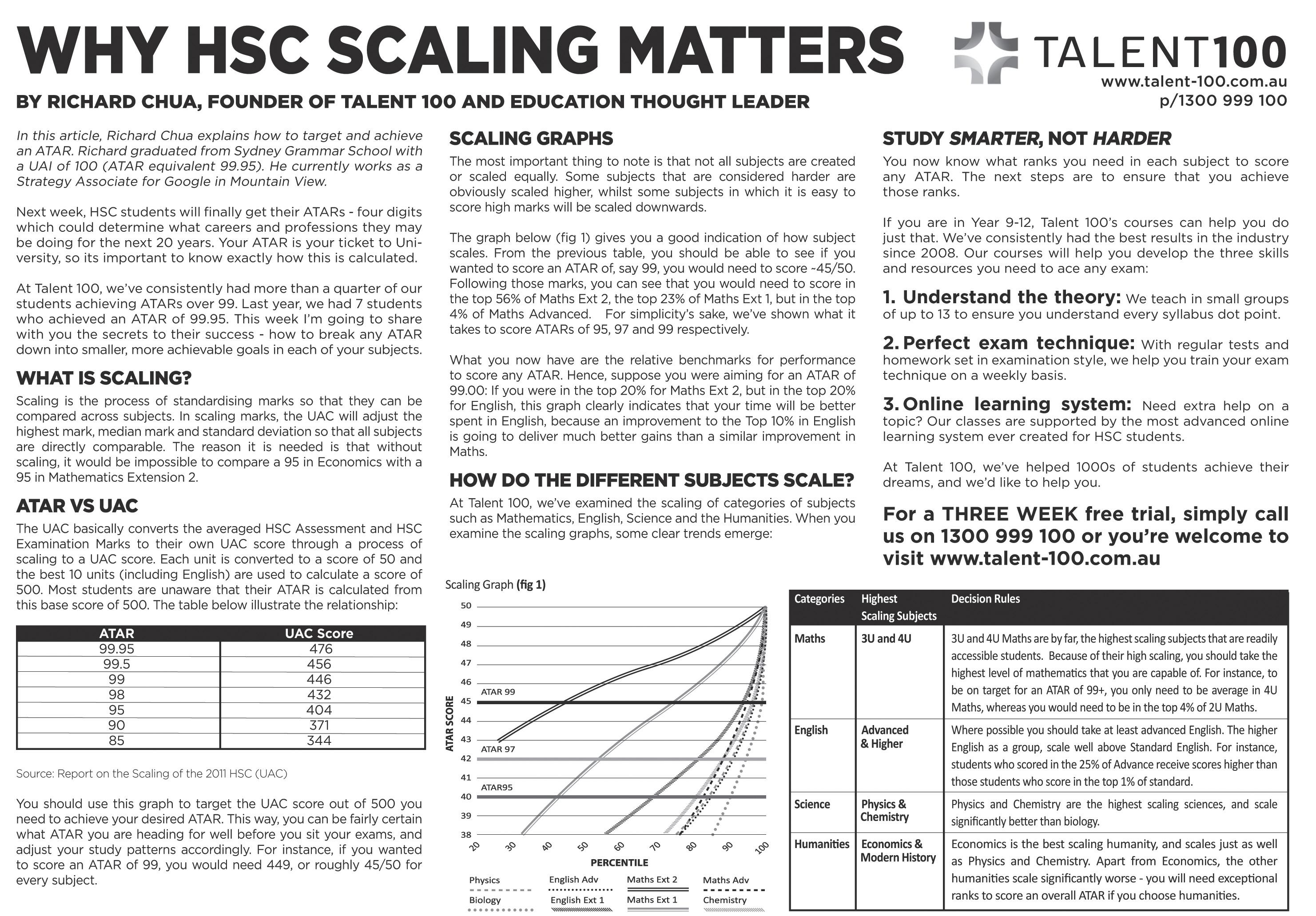
ii) General Skilled Migrationspecialist
iii) Student Visas( new and extension)
iv) State Sponsored Visas / ENS / RSMS / 457
v) Business Migration
vi) Partner and Family Migration specialist


• Waxing / Nail / Body treatment
• Beauty and Skin care • Simple Mehandi and Bridal Mehandi
• Wedding and Engagements packages (Indian brides) • Facials
Harvinder Kaur (Nenu)
Beauty therapist & Hair stylist
Look Good Feel G ood
Shop 3, 22 Henley Road (inside the Arcade)
Homebush West 2140
Ph: 8746 0400
Mob: 0413 062 984
Open 7 days
Open from 9:30 am to 5:30 pm
Shop 34, 74 Genesis Building
Rawson St, Epping 2121
(Entr y also via Beecroft Rd)
Ph: 9868 4040
Mob: 0430 343 565
form on www.completemigrationservices.com.au
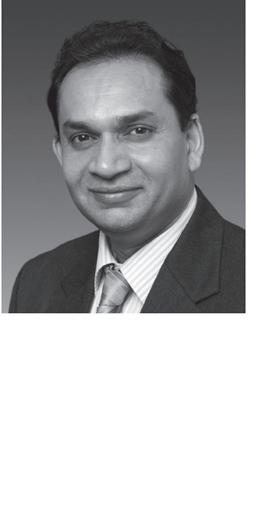
We help you achieve a better life and pursue your dreams
Monday closed Open from 10:00 am to 6:00 pm
His passing is a painful loss for his family, for the Indian government, for Victoria’s Indian community and indeed for the wider community. I extend my condolences to Dr Behera’s family - his wife Rajashree, his son Ananya and daughter Amruta.
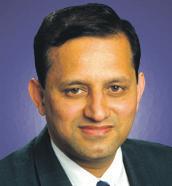
In the passing away of Dr Subhakanta Behera, the Consul General of India in Melbourne, India has lost a great diplomat, the Academy a true scholar, the world of culture a generous patron, Victoria’s Indian community a towering leader, the Australia India Institute a fierce supporter, and I, a close friend.


the arts, attending many concerts and working strongly alongside the FIAV to bring the Indian Music and Dance Festival into fruition.
Dr Behera had a way of bringing together individuals in the community to work towards a common goal. He always took a personal interest in community events and aided with many fundraising ventures. Dr Behera, in his position as CG, always gave back to the community, supporting many individuals and organisations in their attempts to help their community.
Dr Behera’s diplomatic and amicable nature and his vast knowledge made him a popular dinner companion amongst the community.
Dr Behera was respected for his dedication to his role and involvement with the community despite his relatively short tenure as Consul General for India. Several prominent individuals spoke to Indian Link, sharing their memories of this exemplary individual.
I join with the Premier and the Leader of the Opposition to express my sincere sorrow at the death of Dr Subhakanta Behera. Dr Behera was a passionate career diplomat; a talented writer and a creative poet; and a committed family man and a real gentleman who earned the respect and admiration of all those he met.
Dr Behera took on the post of Consul General of India in Melbourne in May 2011 at a time when the Indian community here was facing many challenges. Upon his arrival Dr Behera wasted no time. He constituted a committee on student-related activities to assist newly arrived international
office: to promote and encourage more cultural exchanges between Victoria and India; to increase trade and business opportunities; and to unite the community. He said, ‘My greatest challenge is to bring the community together’.
He was aware that the number of Victorians of Indian heritage had doubled between 2006 and 2010 and the number of organisations had tripled. He said the challenge for him and the community was how to get them working together as one to ensure a brighter future for its children.
Dr Behera saw his role as more than just a consul general for Victorians of Indian heritage, as he believed the Indian community as a whole had links and was already connected to India. He wanted to reach out and connect with mainstream Victorians, and to engage them in cross-cultural exchanges. Dr Behera had a very simple message: to encourage as many Victorians as possible to visit India and to experience, see and taste what India has to offer. He said to me that if people could not go to India, then he would try to bring India to Victoria.
I have known Subhakanta for more than 25 years, from the days when he left Ravenshaw College in Orissa to join JNU in New Delhi. His simplicity was matched by his extraordinary scholarship and talent and his friendship was one of extraordinary loyalty and commitment. The Indian Civil Service exam is one of the most difficult in the world and the Indian Foreign Service recruits less than 30 officers every year out of up to 80,000 applicants. It was a tribute to Subhakanta’s scholarship that he was one of them, and served subsequently with distinction in Moscow, London, Washington, and as head in New Delhi, before taking up his position as Consul General of India in Melbourne a year and half ago.
During these years in the Foreign Service, Subhakanta did not give up his scholarly pursuits, a D.Phil. from Oxford, books, short stories, poems in English and Oriya and a collection recently translated into Hindi and another historical novel in press.
In the last year and half, Subhakanta provided leadership to the Consulate General’s office and to the Indian community more generally. Indeed, Subhakanta and Mrs. Rajashree Behera almost single handedly rejuvenated the Indian cultural scene in Victoria.
When I first met Dr Behera, I was surprised that someone who had just arrived from India was already well versed with the issues that were plaguing the Victorian Indian community. Through regular weekly meeting and briefs, Dr Behera, from the outset, was very willing to be involved in every aspect of the Indian community in Victoria. He was a patron of
Arun Kumar Goel
Consul General of India (Sydney)
It was a great shock to learn about the sudden and untimely demise of Dr. Subhakanta Behera, the Consul General of India in Melbourne.
Dr. Behera was not only a friend and colleague for me, he was a constant source of inspiration because of his simplicity, humility and compassion. During his tenure in Melbourne, he endeavoured to create goodwill for India and Indians in Victoria and Tasmania, and played an important role, in his own right, in improving India-Australia relations. His charming personality and willingness to assist all, endeared him greatly to the Indian community in Australia.
Ravi Bhatia
President Australia-India Business Council (AIBC)
I met Dr. Behera and his family at a semi formal event and we hit it off very well. Our wives Madhu and Rajashree became very good friends. There were several catalysts instrumental in our friendship. We had similar personalities, interests and outlook on politics. We both took much interest in community affairs. As a person he was very approachable, humble and easy to get along with. He would always give you time and he went beyond what one would expect a diplomat to do. He actively took part in community activities, whether it was a cricket game or a formal awards ceremony. He attended every AIBC event whether big or small. He had a role to play as a diplomat, however he was fulfilling a higher goal that he had set for himself through his untiring involvement within the community. His untimely demise shows us how fragile life can be.
From above:
Nicholas Kotsiras MP

Amitabh Mattoo
Vasan Srinivasan


Arun Kumar Goel
Ravi Bhatia









It’s a world of glamour and glitter, but if you follow your dream, you can make it in tinsel-town, writes NEHA
Iwas eight years old when I saw Salman Khan and my all-time favourite actress and dancer Madhuri Dixit in the film Dil Tera Aashiq
As I watched Madhuri perform a particular scene in the film, I was bowled over by how glamorous she looked, and thought it must be magical to be a part of Bollywood. It was at exactly that point, before Madhuri had even finished with the scene, that I secretly began dreaming a dream – to be a part of this world.

Today I can proudly say that my Bollywood dream has come true.
I left a career in accounting and finance to pursue my passion and follow my dreams all the way to the glitz and glamour of tinsel town.
As a professional Bollywood dancer, choreographer and instructor I have worked with some of the industry’s finest talents in several Bollywood films, songs/music videos, TV commercials, stage shows and TV shows.
My very first dance audition in Bollywood was a breeze, and within a week, I was picked by choreographers such as Ganesh Acharya, Bosco Caesar, Remo and Gita Kapur to join their dance troupes.
In the past six years, I have performed in several films and songs, like the Bol Bachan title song; Bhoothni Ke and Talli Hua from Singh Is King; Tak Dhina Dhin from Aladin and Pappu Can’t Dance Saala, among others.
Look out for The Man, starring Sunny Deol and Shilpa Shetty and Yeh Jawaani Hai Deewani with Ranbir Kapoor and Deepika Padukone, both to be released shortly.
My most memorable experiences in Bollywood would have to be with - who elseAmitabh Bachchan. Just his presence makes the whole room buzz and it feels like you are part of something grand. He has a majestic personality which is aweinspiring, as much as the energy and effort he puts into his work even at this age and so far along in his career. It is amazing to watch him work.
Akshay Kumar and Ranbir Kapoor impressed me with their energy and passion. They have great personalities and were supersweet to me.
Most people in the industry can tell I am not a local and are intrigued to hear about my Bollywood journey. Akshay Kumar, Katrina Kaif, Diya Mirza, Govinda and Herman Baweja
JAINhave all asked me why I left Australia to come to Mumbai, and wished me well. Deepika Padukone, Shilpa Shetty and Amrita Rao have complimented me on my dancing, and my favourite celebrity Shah Rukh Khan gave me a hug when he saw me again after performing in Chak De India!
I am extremely blessed to have had my very first shoot with legendary actor Amitabh Bachchan for the film Aladin which also starred Ritesh Deshmukh and Jacqueline Fernandez. It was a 5-day shoot for the song Tak Dhina Dhin which is where Aladin (Ritesh Deshmukh) rubs the lamp and out comes the Genie (Amitabh Bachchan). With 100 dancers on set as well as the entire production team, hair and make-up artists, costume designers and spot boys, it was definitely a noisy and chaotic environment. But when Amitji walked onto the set, there would be pin drop silence. He has this aura around him which acts as a magnetic field and you can’t help but to be drawn towards him. You feel such immense respect towards him and everyone on set, especially me, was in complete awe. Sitting in the middle of the entire set, Amitji would rehearse his lines…and I would find myself staring at him. It was as if I couldn’t take my eyes off of him. It was embarrassing when he would look up from his script and catch me looking at him, but he would just give me a warm smile every time and an occasional wink!

With no previous rehearsals scheduled for this shoot, all of us dancers were learning the choreography for the song on set. We had to learn and remember blocks of up to 32 counts within 10 minutes and be perfectly synchronised with the other 99 dancers on set before it was time for Lights… Camera... Action!
And if you watch the song Tak Dhina Dhin you can see that every beat is choreographed and the song becomes faster and faster so a lot of energy is required. Sometimes we had to shoot the same section several times and each take would have to be like the first, with loads of energy and enthusiasm no matter how tired you were.
My most memorable moment on the set of Aladin was when I had a friend take a photo of Amitji and I. She was in such awe that by mistake she held the camera back to front and took a
photo of herself! Amitji was very sweet; he said ‘Here we are posing and your friend’s taken a photo of herself!’

A typical day at work
7 am start, with an hour in make-up and hair. Then rush to collect costume (on Day 1 of the shoot the policy is first in best dressed…). Breakfast on set, then ready for work by 9 am. We learn the choreography or practise the steps while the camera’s set up, and then spend the rest of the day filming the song in parts with different camera angles. There are multiple takes for every section of the song, because for some reason or the other the shot is not perfect - the lighting is not right or the camera’s moved too fast or the actor gets the step wrong or one strand of the actress’s hair is out of place!
Every time the camera angles are changed, it’s a 15 minute break.
I spend these taking photos of the set, or if the moment is right chat with the celebrities on set! Lunch and chai-time are welcome breaks, and work continues till about 8.00pm. As pack-up is announced, there’s a stampede of dancers trying to get out of makeup and hang up costumes for the next day. Shoots are 12-hour shifts and take days… but it’s always worth it! Night shoots are great fun with a different vibe.
.. would have to be the title song for the film Bol Bachchan. The song is so catchy and although I heard it a hundred times just during rehearsals I would always want to hear it again. The choreography was also so much fun and dancing with 120 dancers amplified the energy and excitement. It was a grand and absolutely beautiful double storey set with many props and interesting elements and of course, the opportunity to work with Amitabh Bachchan for the second time was a dream come true. Amitji walked out of an enormous egg when making his first appearance in the song. We threw confetti into the air and had glitter falling on us from the sky which was out of this world! We played dhols right at the end of the song. Abhishek and Ajay sat on a life-size pendulum which was suspended 20 feet above ground level and swayed side to side!
It was also a blast to watch the chemistry between Amitabh Bachchan, Abhishek Bachchan
and Ajay Devgn as Abhishek and Ajay are both pranksters on set and would play jokes on each other like scaring one another from behind or imitating each other’s dancing at which Amitji would just
shake his head. My journey has been interesting and rewarding, and the road ahead is promising. I look forward to guiding others on their journey into the Bollywood world of glitz and glamour.


• “Has impressed me with the accuracy of his guidance & the time frames he gave us for our (Sponsorship/457) application were spot on. I personally recommend anyone to use his services.”
– Sana Glass Pty Ltd., Lansvale, NSW
• “Thank you very much for your support while organizing the sponsorship application for our employee. We are very pleased with your work ...will confidently recommend you & your company to our business partners & friends.” – Vaucluse Auto Repairs P/L., Vaucluse, NSW
• “Initially, I was a bit doubtful whether my company will get the (457) sponsorship or not because mine is a small company. Thank you very much for your hardwork & guidance.” – Prime Partners Pty Ltd, Casino, NSW
• “Everyone thought that I won’t get my 457 visa....thank you for making my application successful.” – S. Rao, Casino NSW
• “You have been excellent in handling our case & all its difficulties including my daughter who has already turned 19.”
– K. Sanyasi, Warwick Farm, NSW
• “Ramneek handled my sponsored migration visa with precision of a surgeon. I reckon, my application’s short processing times was owing to Ramneek’s immaculate understanding of the process, sharp eye for details in reviewing documents and presentation of the case. The first check list for submission that was customized for my professional background and situation) that Ramneek provided served as the ultimate guide in assembling the application. All my queries were answered in less than 24 hours. Such professionalism and efficiency made my visa process a breeze… highly recommended for anyone serious about his/her immigration plans.”
– V. Srivastava, Melbourne
• “Thanks for the effort taken in securing Ganga’s work visa. I know it was a difficult case, much appreciated, thanks.” – Dhaya Chandra Pty. Ltd., NSW
• “I withdrew (my) first 457 visa application…& I got it the second time with Ramneek’s help. Thank you so much.” – C. Koppela, Homebush, NSW
• “Ramneek, handled our matter in a very professional way…was precise with what he wanted…his knowledge is deep and accurate. I felt very comfortable.” – Shree Ram Pty Ltd, Lidcombe, NSW
• “Many thanks for acting promptly when needed.”
– K. Patel, 457 Sponsor, Sydney

• “Very satisfactory service provided by Mr. Ramneek Madahar regarding my visa complications.” – P. Singh, Ellenbrook, WA
• “Everything was well planned & Systematic. Must recommend for Immigration issues.” – H. Gandhi, 457 Visas, Merrylands, NSW
• “I am really very thankful & overjoyed... lead me through the toughest situation to final success.” – N. Singh, GSM grant under 2 months.
• “After 8503 (no further stay), condition waiver, my student visa was refused. Thank you Mr. Ramneek for a successful appeal at the Migration Review Tribunal without a hearing.” – P.D. Glenmore park, NSW
• “I got my 457 work-permit (from student visa) within 4 weeks. Mr. Ramneek done his work very accurately, on time, without any failure & provides perfect guidance. I am very happy with his work & very thankful to him.”
– Chirag Patel, Kew, Victoria.
• “I was able to negotiate through the complicated process & retain a baker full time in my business. For 457 working visas, Mr. Ramneek Madahar’s services are highly recommended. Definitely a 5 star service.”
– Harry, Bakery Owner, Oatley, NSW
• “I was finally able to receive confident & correct advice in relation to my situation from Mr. Ramneek Madahar.”
– G. Bastola, For SC457 Visa, Homebush, NSW
• “Thank you for your timely assistance with our restaurant sponsorship and 457 visa grant.” – CH Patel & DC Patel, Restaurant Owners, Camberwell, Victoria
• “Ramneek Sir has made our 457 visa 100% successful. Thank you forever.”
– Shruti Shah, Merrylands, NSW
• “I was a student in Australia. Mr. Ramneek helped me for a 457 visa.”
– Chaudhari Prakash, Ashfield, NSW
• “I was on a Bridging visa for my SC885 visa application on 110 points. Mr. Ramneek made my 457 visa possible.” – C. Patel, Merrylands, NSW
• “For any complex cases, to anyone who needs help in immigration... don’t worry you are in safe hands.”
– A.H., 457 Work Visa, Cronulla, NSW
• “I sincerely recommend Mr. Ramneek’s services for immigration.”
– K.K., Central Coast, NSW
• “Thank you Ramneek, I wish you all the best.”
– S. N., GSM Visa, Egypt
• “Mr Ramneek Madahar, thank you very much for our PR. Your efforts are appreciated & thanks for looking after my case.”
– D. Patel, Business Skills, Melbourne, Victoria
• “I am thankful to Ramneek for my permanent settlement in Australia.”
– Vikas, GSM, Parramatta, NSW
• “I applied for Regional - SC119 visa under the DRC on 15/11/2011, the visa was granted on 09/02/2012. Mr. Madahar has handled my application very well.” – Vijaya, Bourke, NSW
• “Thank you Mr. Ramneek for my ENS PR under exceptional circumstances.” – S. Kumar, Croydon, NSW
• “Thank you for your support & help towards my ENS PR.”
– S. N., Ingleburn, NSW.
• “I am very thankful to Ramneek Sir for his help & support for my ENS residency. I had no hopes left & was planning to go back to India with my family.” – K. Shah, South Strathfield, NSW
• “Thanks Very – very much for your help for extending my student visa and 457 and RSMS advice.”
– A.Rani, Smithfield





 BY JYOTI SHANKAR
BY JYOTI SHANKAR
Sixty years ago when I boarded a BOAC Skymaster flight for Sydney I had my one newly-tailored blue suit in my bag and very little idea of Australia, beyond an excited sense of optimism for what the future might hold. I’d never before left Sri Lanka (then Ceylon) and, of course, I’d never been on a plane. I had grown up in a rural village where we took the buggy cart to school. And I hadn’t had much time to get used to the idea either. When the telegram delivery boy tracked me down on his bicycle at a tennis court in Colombo in 1952, I tore the envelope open to discover my application for one of the very first Australian university scholarships for Asian students had been successful and that I’d be leaving for five years within a fortnight.”
This is 82-year-old Tennyson Rodrigo reminiscing about his journey to Australia as one of this country’s earliest international students, who came here under the ‘Colombo Plan’. He returned to Sydney last month on a special invite to attend a gala dinner at his alma mater, the University of New South Wales. UNSW itself has come a long way from the makeshift corrugated-iron classrooms of Tennyson’s days, to one of Australia’s premier educational institutions with state-of-the-art buildings and programs. The Colombo Plan, under whose aegis Tennyson came to Sydney, has since brought over 20,000 students into the country, changing their lives forever and making a substantial impact both locally and in their home countries.

NSW Premier Barry O’Farrell delivered the keynote address on international education at the 60-year reunion on November 22 to an audience that included Colombo Plan alumni dating back to the first year of the scheme in 1952. Tennyson was the only person they could trace back from that year.
In the fifties, after the Second World War ended, countries were
coming out of their colonial shackles and trying to rebuild their economies. The White Australia policy was slowly being dismantled. Australia wanted to move ahead, change perceptions and engage in a meaningful South-South cooperation. At the Commonwealth Conference of Foreign Ministers held in Colombo in January 1950, the Colombo Plan was formulated to strengthen the economic and social development of the countries in the region, and promote the transfer and sharing of technology and developmental experiences. Original signatories to the Plan were Australia, Canada, Ceylon, India, New Zealand, Pakistan, United Kingdom, Malaya and North Borneo, but later the membership expanded to 25 countries.
Tennyson won one of the first Colombo Plan scholarships to study chemical engineering, and at 22, found himself bound for Sydney. Everything was new and different. Milkshakes and baked beans on toast soon became part of his diet. He soon discovered that his tailored suit with its huge lapels wasn’t quite right, so he saved up his allowance to buy a blue pin-striped suit from Gowings which helped him sail
through the next five years.
“There were plenty of other new arrivals on campus, mostly Europeans in the first wave of post-war migration, but I did not encounter racism,” recalls Tennyson. “Some looked at me strangely but not with hostility, often displaying a genuine curiosity about Asian cultures”. Brown-skinned people were rare those days and Tennyson soon became a mini celebrity with his musical talents on the sitar, violin and tabla. The Sydney Morning Herald ran a front-page picture of him attending a ball. He was invited by ABC Radio to play the sitar and featured on the cover of ABC Weekly. The Indian High Commissioner, KC Sengupta’s wife Manjula was accomplished in Rabindra Sangeet and Tennyson was often called upon to accompany her with his instruments.
His association with the Indian community was strong during his stay in Sydney, and he fondly recalls the staging of the Tagore dance drama Chitrangadha with a
cast of Australian, Sri Lankan and Indian students. They lived at the International Friendship Centre at Drummoyne, which became a little microcosm of cultures.
“The mix of Chinese, Malay, Indian, Pakistani, Nepali, Filipino, Indonesian, Fijian, Papuan and other students, as well as their different religions, was itself unusual in Australia,” says Tennyson.

He is now pleased to see how multiculturalism is such an integral part of Australian society these days. When leaving, he was presented with a book about Kangra Valley paintings of India by the then Secretary of the Indian Association as a parting gift, and he cherishes the book even today.
have gone on to occupy important positions in their countries and have done their bit to promote a mutual understanding of cultures, thus becoming de-facto ambassadors for Australia. Past Colombo Plan scholars include Baburam Bhattarai, the current Prime Minister of Nepal; M. J Perera, the first Director General of Radio Ceylon, the oldest radio station of South Asia; and Khaw Boon Wan, the current Minister for National Development in Singapore. When asked if he ever thought of migrating to Australia, Tennyson replies that he never considered this move. The Sri Lankan government had him sign a bond that was assured by a family friend, to ensure his return after completion of his 5-year study. That was not what took him back, but a sense of responsibility for nation building. He returned to a job as ‘temporary assistant engineer’ in Ceylon’s public service on a salary equivalent to $2 a month, but rose through the ranks to set up and manage two of Sri Lanka’s largest industrial projects: its first oil refinery and its first nitrogenous fertiliser plant. Later Tennyson took up senior positions in banking, consulting and industry. He has continued to live in Colombo with his wife to this day, occasionally visiting his old friends in Australia and India.



Lately, with the release of the Asian Century white paper, there has been much talk about reviving the plan with Australian students studying in Asian countries as well, and that is not a bad idea as the equation has now changed. Developing countries have a lot to offer too, and a mutually symbiotic relationship would go a long way to promote world peace and development. Tennyson says, “I have always thought of myself as lucky, rather than especially talented. I felt that good fortune when that telegram arrived. Neither of my parents had been to university, so I was the first. My father was a good man, but rather taciturn. However, on that day I could see the pride in his eyes.”
He is happy that Australia has moved away from its insular ‘White Australia’ outlook since.
The manuscript of a 212-year-old dictionary written by a British polymath employed by the East India Company in the late 18th century has been traced in the British Library in London, shedding new light on the history of words in Indian languages.
The dictionary, titled Comparative Vocabularies, was written in 1800 by Dr Francis BuchananHamilton (1762-1929), who was a surgeon to the governor-general Lord Wellesley in Calcutta (now Kolkata). The manuscript traced in the British Library by Rini Kakati, the London-based director of FASS (Friends of Assam and the Seven Sisters), is a dictionary of 10 languages, including Assamese, Bengali, Manipuri, Garo, Rabha Koch, Kachari, Panikoch and Mech.
Kakati revealed that she was alerted about the manuscript by Raktim Ranjan Saikia of the Department of Geology in JB College, Jorhat, on behalf of Asom Jatiya Prakash, publisher of the dictionary. She said she was delighted to be able to trace the historic collection.
The book has 155 pages of landscape-sized paper. There are 18,000 words in all with 1,800 words in each of the 10 languages.
A Scottish physician, Buchanan-Hamilton is recognised for making significant contributions as a geographer, zoologist, and botanist while living in India. The standard botanical author abbreviation ‘Buch.-Ham.’ is applied to plants and animals he described.
In 1794, he was appointed a surgeon with the East India Company, and explore Burma, Chittagong (1798), the Andaman Islands, Nepal (1802-3) and North Bengal and Bihar (1807-9), when he made detailed surveys of the botany, geography, agriculture, economy, social conditions and culture of these areas, preparing extensive reports which now form an important historical resource.
On the return of the mission, being stationed at Jjakkipur, near the mouth of the Brahmaputra, he wrote a description of the fishes of that river, which was published in 1822.
An Indian-origin Sikh is all set to be the first person guarding the Buckingham Palace in his turban after being given the privilege not to wear the mandatory bearskin on ceremonial duties.
Guardsman Jatinderpal Singh Bhullar, 25, who joined the Scots Guards this year, has
been given permission to wear a turban when on guard duty outside Buckingham Palace in London, breaking hundreds of years of tradition, Daily Mail reported recently.
The regiment traces its origin back to 1642 and its soldiers have worn bearskins on parade since 1832.
Bhullar is based at Wellington Barracks in Birdcage Walk. The base is used by soldiers from the Scots Guards’ F Company, who are responsible for public duties and guarding the Queen.
According to military sources, Bhullar, from Birmingham, is expected to parade for the first time next week. When he marches with his colleagues he will become the first guardsman not to wear a bearskin headgear.
As a devout Sikh, it is mandatory for Bhullar to wear a turban. It is intended to protect his hair, which he never cuts, and to keep it clean.
For centuries, Sikhs have worn turbans in battle and fought as part of the British Armyincluding Bhullar’s grandfather, who served in World War II.
The step, however, has irked some serving non-commissioned officers based at Wellington Barracks, who are furious that the Ministry of Defence (MoD) compromised centuries of history for one soldier.
Traditionalists in the Scots Guards say the allowances made for Bhullar will make the whole company look ridiculous to tourists and onlookers.
“It should be regiment first, then religion,” they have claimed.
Bhullar is one of only 20 to 25 British-born Sikhs in the British Army.
An MoD spokeswoman said: “The Army takes great pride in its diversity. Discussions are underway between this unit, the Sikh community and the MoD. The individual will have the full support of the Army and his colleagues.”
The Oommen Chandy government at its weekly cabinet meeting in Thiruvananthapuram in end November decided to allow the nearly two million non-resident Keralites (NRKs) the right to vote in the local body elections, a Kerala minister said.
State Minister in charge of the Diaspora K.C. Joseph said the cabinet decided to enact a new provision in the Kerala Panchayati Raj and Kerala Municipalities Act, which would enable the diaspora to vote in local body elections.
“Just as the NRIs got their names included in the voters’ lists by making amendments in
the Representation of People Act, 1950, giving them rights to vote in assembly and Lok Sabha elections, we decided to include a new section in the Kerala Panchayati Raj and the Kerala Municipalities Act, which will enable our diaspora to cast votes whenever there is a local body poll,” Joseph said.
The enactment of the new provision is expected to be made during the forthcoming assembly session that begins Dec 10.
“This demand from the Kerala diaspora has been a long-standing one; never before were their names included in the voters’ lists, so there is no record of these people. With this move, these people will now find their names in voters’ lists,” Joseph said.
The local bodies’ elections, held once in five years, are next scheduled for 2015.
In the April 2011 state assembly polls, all NRKs whose names figured in the electoral list and who were present in the state during the elections were allowed to cast their votes for the first time.
The clash between the Indian-origin steel giant Lakshmi Mittal-run ArcelorMittal and the French government ended recently after the former agreed to drop plans for 650 redundancies at site.
ArcelorMittal, the world’s largest steel company, agreed to invest 180 million euros ($234 million) over five years and cancel plans for 650 redundancies at its steelworks in Florange in the eastern region of Lorraine, The Independent reported recently.
In return, Paris abandoned a threat to nationalise the factory and re-sell it to a private buyer, it added.
The showdown had become symbolic of President François Hollande’s determination to reverse the erosion of France’s industrial base. The government was forced to accept, however, that two shuttered blast furnaces would not reopen immediately.
Instead, ArcelorMittal, controlled by Britishbased billionaire Mittal, will develop other profitable activities at the site such as the production of steel plate for the German car industry.
Three hours before the deadline for a deal, Prime Minister Jean-Marc Ayrault said a compromise had been reached.
Jobs would be preserved, he said, by a “programme of investment” in cold steel activities.
The blast furnaces, which produce “raw” or hot steel, would not reopen but be mothballed
until they could be converted to possible experimental use in environment-friendly steel-making.
There would be no compulsory redundancies, Ayrault said.
In return for the “unconditional promises” by ArcelorMittal, he said, Paris dropped its threat to nationalise the complex and sell it within a matter of months for 400 million euros to an undisclosed potential buyer.
Internationally, the nationalisation threat cause a stir, with London Mayor Boris Johnson mocking France for returning to the statist 1970s or even the revolutionary 1790s.
Efforts on to seek release of Andhra
Indian authorities are making efforts to seek release of a couple from Andhra Pradesh who has been arrested in Norway for chiding their son.
According to their family, an officer of the Indian embassy met Chandrashekar Vallabhaneni, who is in police custody, in Oslo on Nov 30 and assured him full assistance. According to sources, the officer collected all the details of the case and spoke to Chandrashekhar, an employee of software giant Tata Consultancy Services (TCS).
Chandrashekhar and his wife Anupama were arrested by police on 26 Nov but their family in Hyderabad only learnt of this on 29 Nov.
The arrest was made nine months after their seven-year-old child Sriram complained to his school teachers that his parents were threatening to send him back to India for wetting his pants.
Originally hailing from Krishna district in coastal Andhra, Chandrasekhar was sent to Oslo by his company last year to handle a project. The family returned home in July this year.
Chandrasekhar again left for Norway on Nov 23 for work. This time he went only with his wife leaving behind both sons. A court in Oslo issued summons and later police arrested them.
Chandrasekhar’s parents and other family members are worried about the couple. They appealed to the state and the central governments to intervene to seek their release. According to the child welfare authorities took Sriram for a month, but later returned him to his parents.
Andhra Pradesh Chief Minister N. Kiran Kumar Reddy directed Chief Secretary Minni Mathew to get in touch with the officials of the ministry of external affairs to seek the release of the couple.





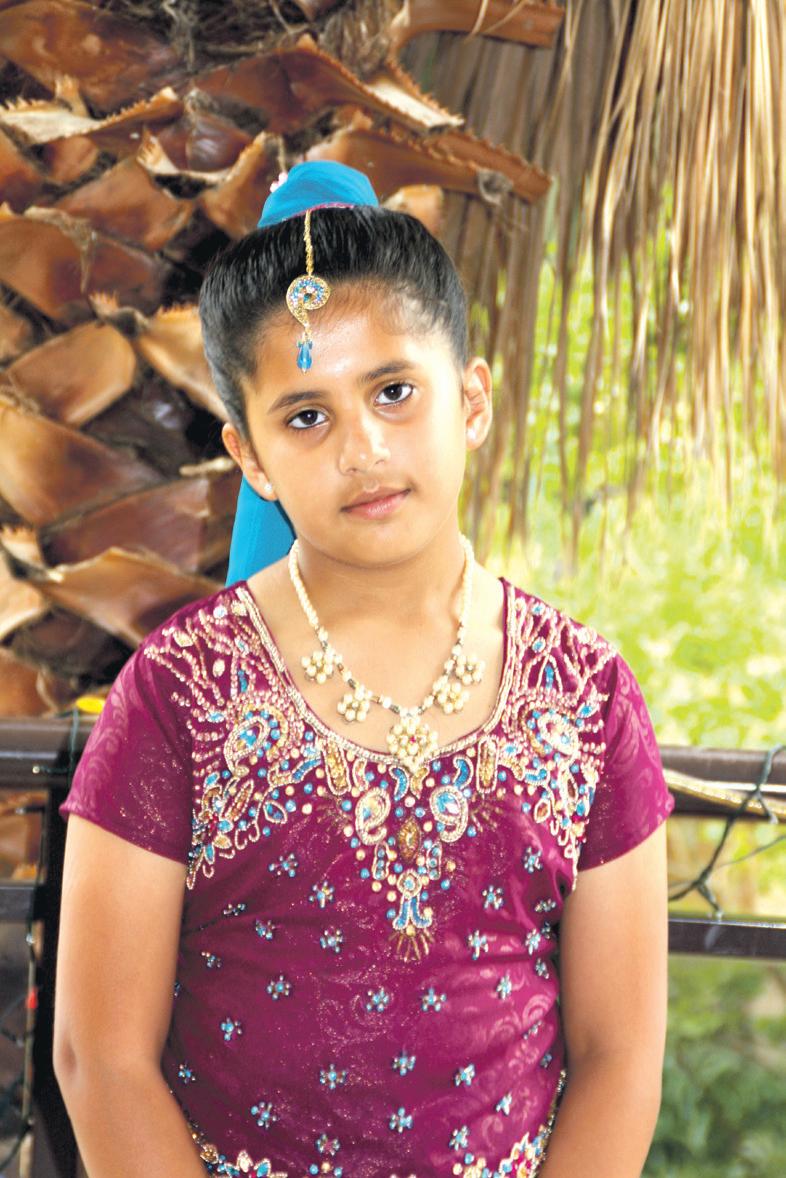

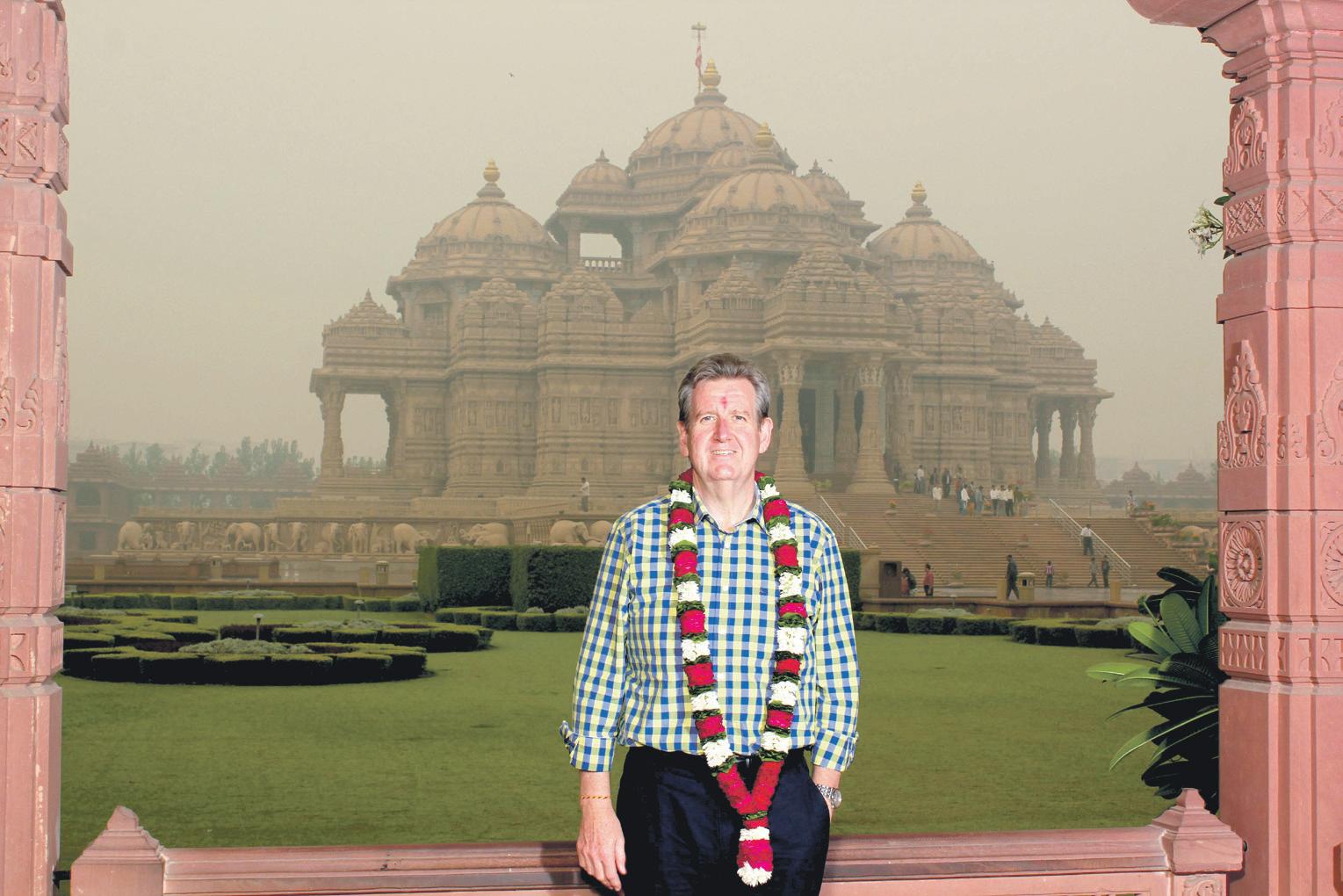







Inder Kumar Gujral was India’s prime minister for a brief 11 months in 199798. But the mild-mannered, soft-spoken politician, whose personality flew against the political archetype, will be remembered primarily for his keen interest in protecting and promoting India’s external interests and the eponymous Gujral Doctrine - his mantra for India’s neighbourhood policy when he was external affairs minister twice in a decade.
The quintessential Congress member who later left the party to join the Janata Dal after differences with former prime minister Indira Gandhi over her autocratic ways, Gujral died this month at the age of 93, as quietly and gracefully as he had exited the political stage two decades ago.
In a way reflective of the man, who came to Delhi from Pakistan in the traumatic post-partition period, the Gujral Doctrine advocated magnanimity towards small neighbours in the interest of regional peace and progress.
“The logic behind the Gujral Doctrine was that since we had to face two hostile neighbours in the north and the west, we had to be at ‘total peace’ with all other immediate neighbours in order to contain Pakistan’s and China’s influence in the region,” said Gujral in his autobiography
Matters of Discretion
Derided as a weak and conciliatory policy at the time when reciprocity was still the ruling mantra at South Block, the principle was nevertheless carried forward by successive governments. It helped change
mindsets and improved India’s ties with its neighbours through the years.

Gujral said: “When I finally demitted office (as prime minister) in March 1998, I had the satisfaction that India’s relations with all its neighbours were not only very healthy but also, to a large extent, the elements of mistrust and suspicion had evaporated.”
Gujral headed the external affairs ministry through two crucial periods (198990 and 1996-97) under first prime minister V.P Singh and then H.D. Deve Gowda. He helped steer India through the crises of the early 1990s, when India was making the difficult adjustment to the end of the Soviet Union, and the oil shock administered by Iraq’s invasion of Kuwait (both important oil suppliers to India).
The Comprehensive Test Ban Treaty (CTBT) was being negotiated during his second term and his period as prime minister. Despite strong international pressure, India refused to sign the unequal treaty as banning future tests would have closed India’s nuclear option.
The invasion of Kuwait not only disrupted India’s oil supplies but, more importantly, left almost 200,000 Indians stranded in the region. Gujral flew to Moscow, Washington and Baghdad and obtained assurances on oil supplies from Moscow. In Baghdad he was greeted by Iraqi president Saddam Hussain with a hug. Gujral was pilloried by the Western and sections of the Indian media for that but the visit ensured that the Indians stranded in Baghdad and Kuwait were allowed to be evacuated when “others were being held as guests”.
Gujral revealed in his autobiography that in the general elections after the first NDA government led by Atal Bihari Vajpayee fell by just one vote in parliament, Congress president Sonia Gandhi offered him a Congress nomination for the polls.
“In case, I did not wish to contest, she told me that she would back my entry to the Rajya Sabha. However, I decided that having held the position of the prime minister of India, I must refrain from switching parties and call it a day gracefully.”
Inder Gujral was born Dec 4, 1919 in the town of Jhelum on the banks of the river of the same name, now in Pakistan. His parents were freedom fighters and members of the Congress but Gujral was drawn to the students’ wing of the Communist Party of India.
He was sent to Lahore Borastal Jail for organising a demonstration.
Gujral came to Delhi after the 1947 partition and got involved in local politics, becoming closer to the Congress. In 1964 he was elected to the Rajya Sabha with Indira Gandhi’s backing. Three years later, in 1967, she made him minister of state for parliamentary affairs and communications.
When Emergency was imposed in 1975, he was the information and broadcasting minister. But he soon fell foul of Sanjay Gandhi and was relegated to the planning ministry. When his Rajya Sabha term ended a year later, Indira Gandhi sent him to Moscow as India’s ambassador (1976-80) “since he refused to bow down to the de facto powers (read Sanjay Gandhi)”.
He left the Congress after his stint in Moscow, later joining the anti-Congress Janata Dal. He was elected to the Lok Sabha
for the first time in 1989 from Jalandhar in Punjab, re-elected in 1998 when he was interim prime minister but he decided not to contest the 1999 elections, choosing to retire from electoral politics.
He spent his last decade writing and speaking largely on foreign policy issues and was much sought after in intellectual and academic circles.
Against the backdrop of Beijing’s assertiveness in South China Sea, India’s navy chief in a tough message early December said the rapid modernisation of the Chinese Navy is a “major, major cause for concern” and declared support for an Indian firm’s oil interest in the contested waters.
Navy chief Admiral D.K. Joshi robustly defended freedom of navigation and underlined that the force was ready to protect the country’s assets in the maritime domain.
The navy chief’s remarks came on a day when National Security Adviser Shivshankar Menon is in Beijing to hold talks with China’s influential state councillor Dai Bingguo, Beijing’s chief pointsperson for boundary talks.
“The modernisation (of Chinese Navy) is truly impressive... It is actually a major, major cause of concern for us, which we continuously evaluate and work out our options and our strategies,” Admiral Joshi told reporters at the Navy Day press conference.
With an assertive China flexing its muscles in South China Sea, he also stressed that the Indian Navy will protect ONGC Videsh’s investments in oil blocks off the coast of Vietnam.
“Our primary concern is freedom of navigation. The ONGC also has blocks in the South China Sea. The navy is here to protect our interests in the maritime domain,” he said.
“The South China Sea is a complex issue. We are not a direct party. No territorial interest is there for us,” Joshi told reporters here to queries about recent Chinese activities in the South China Sea.
“In certain sectors ONGC Videsh has certain interests. It has energy exploration blocks, three in number, and since it is an area of Indian interest the Indian Navy, should there be a need, would stand by,” he said.
“Not that we expect to be in those waters very, very frequently, but when the requirement is there for situations where the country’s interests are involved, for example ONGC Videsh, we will be required to go there and we are prepared for that.
“Are we holding exercises for that nature? The short answer is ‘yes’.”
Joshi also underlined that disputes over freedom of navigation and territory within the South China Sea must be resolved within the ambit of international treaties. “Not only us, but everyone is of the view that they have to be resolved by the parties concerned, aligned with the international regime, which is outlined in UNCLOS (United Nations Convention on the Law of the Sea), that is our first requirement,” he said.
China’s massive military build-up in recent years has evoked much concern among strategic circles in India.
“The accretion of trans-border military capability by China is a matter of legitimate concern for India,” C. Uday Bhaskar, a strategic expert at the Society for Policy Studies, a think tank, told IANS.
Bhaskar stressed that while China does not pose an immediate threat to India’s interests, the Chinese modernisation needs to be monitored carefully.
China’s military budget has recorded a major upswing, and has officially touched $106 billion in 2012.
With an evolving strategic environment on mind, Joshi focused on scaling up the Indian Navy’s capabilities and spurring the modernisation of the naval infrastructure to meet a host of challenges.
“Modernisation and enhancement of the Navy’s capabilities is an ongoing process, to meet emerging maritime challenges/threats. These include aircraft carriers, stealth frigates, destroyers, corvettes, amphibious ships and submarines.”
“The Indian Navy would also be inducting state-of-the-art aircraft and helicopters to augment our surveillance and integral aviation capabilities,” he said.
From Indian names including Zeenat Aman, Bipasha Basu, Genelia D’Souza, Shazahn Padamsee to international fashion icons like Paris Hilton, Miss Paraguay Leryn Franco and Nicole Huber, the second edition of India Resort Fashion Week (IRFW) was more about glamour than business.
With as many as 30 shows, the four-day festival that was divided into three areas‘The Fashion Show’, ‘The Fashion Village’ and ‘The Music Festival’, concluded in Goa recently, with a energetic performance by Paris, who visited the country for the second time.
The first edition witnessed 15 designers showcasing their talent, but the second edition had more names.
Some of the established names part of the fashion fest were Narendra Kumar, Neeta Lulla, Arjun and Anjalee Kapoor, Pria Kataaria Puri, James Ferreira, Falguni and Shane Peacock, Rocky S and Babita Malkani.
When asked why there were lesser established names this year, Mumbai-based designer Narendra Kumar said that people in India were little exposed to trends in resort wear.
“I think I understand the value of the resort week, other people probably do not understand or cannot make clothes that are different from one collection to other. It’s important that I participated and am sure there will be more designers who will enjoy the mix of fun, fashion and music together in the coming days,” he said.
“I think the resort trend is relevant to India. It is one kind of clothing that is perfect across India. It is probably the best thing one could do,” Kumar added.
Unlike last season, this fashion week was organised in open air, giving more space for designers to showcase their creativity.
While space was provided, there were hardly any collections displayed for the buyers. Almost all the stalls were empty, and there was much leisure and chatting.
Shane and Flaguni Peacock, who were the finale designers for the fashion week, said that organising a resort week is surely going to help the Indian fashion world.
“Resort week is definitely a good thing to do for the Indian market and it was our gut feeling that made us say yes to this event,” said the designer duo, who rarely participate in Indian fashion weeks because of their international commitments.
Amit Patel from E-Sense entertainment, who brought some of the international names, including Paris, said that buyers from around the globe had flown in to see the collection.
“Indian fashion is much more appreciated outside India and with IRFW we strive to create a platform for all aspiring designers to showcase their talent globally. It’s a perfect blend of music and fashion. Also there has been a lot of business as buyers from around the globe have flown in to watch the collection,” said Patel. Visitors at the IRFW seemed more drawn to the music than the fashion.
The four-day event had a robust line-up of Indian and international disc jockeys (DJs).
From Indian DJs like Vijay Chawla, Anish Sood and Clement D’Souza to international names like Sidney Samson, Dimitri Vegas, Like Mike and of course Paris Hilton, the music definitely attracted one and all.
The outreach to India could be the centrepiece of the Pakistani government’s foreign policy credentials going into the election, a leading daily said recently, lamenting that the process of trade liberalisation with New Delhi has been “gummed up because of parochial interests”.
An editorial in the Dawn said trade with India is supposed to be the game-changer in relations between the two countries.
“Better ties with India, including flinging open the doors to mutually beneficial trade, is supposed to have become a bedrock principle among mainstream politicians. But few things here follow a smooth script,” it said while referring to Pakistan missing a self-imposed deadline to allow all tradable items to cross the land border with India.
Agriculturalists and their supporters in cabinet are reluctant to endorse the government’s own plan ahead of an election, it said.
“The thinking is typically protectionist, and bereft of a full understanding of what Pakistan would have to do after cabinet endorsement of trade liberalisation with India.
“...given the quality of debate in the cabinet and the electoral considerations of politicians becoming paramount with an election on the horizon, rational argument is an unfortunate casualty in decisionmaking,” the daily added.
Equally worrying, the editorial said, is how easily the decision-making process can be manipulated by vested interests, even on the civilian side.
“The outreach to India could be the centrepiece of this government’s foreign policy credentials going into the election; the manifold benefits of trade, including the positive spillover for other security aspects of the fraught Pakistan-India relationship, are undeniable; and with an economy struggling to return to a high growth path, every little bit can help - and yet the process of trade liberalisation with India has been gummed up because of parochial interests.”

It went on to say that after over six
decades of a “dispiriting” relationship with India, there are few reasons or excuses that have not been proffered to thwart better ties.
“But at least this much has become clear: without bold and courageous political leadership, meaningful improvements in Pakistan-India relations will never materialise,” it said.
“The issues and disputes between Pakistan and India are very real. The hawks on the Indian side are equally real, as is the growing suspicion of Pakistan across the Indian elite in government, civil society and the media. But none of that is reason to stop trying. Trade is a win-win situation for both Pakistan and India; the federal cabinet needs to better educated in the matter,” the daily added.
Tibet owes its religion to India: Tibetan PM-in-exile Attributing the success of the Tibetan democratic experiment in exile to Indian values and traditions, Tibetan Prime Minister-in-exile Lobsang Sangay recently said that the country “owed its religion to India”.
“Tibet owed its religion to India and that it is owing to the proximity to India physically and spiritually that the Tibetan
struggle has conformed to the tenets of ahimsa (non-violence), dialogue and reconciliation,” said Sangay, who took over as political successor to the Dalai Lama.
The Tibetan leader was speaking at the ‘Sixth Dr. K.R. Narayanan Memorial Lecture’ on the theme - ‘Democracy in Exile: The Case of Tibet’ at the Jamia Millia Islamia in New Delhi.
Harvard-educated Sangay, who was elected head of the Central Tibetan Administration, said that the Tibetan democracy, above all, owed itself to the vision of His Holiness the Dalai Lama.
On the importance of Tibet’s water and ecology, not just for India but for the environment sustainability of the world, Sangay said that continued destruction of natural resources, mindless expansion in the name of development and extensive militarisation will only add to global climate worries.
The Dalai Lama has lived in India since fleeing his homeland in 1959. The Tibetan exile administration is based in Dharamsala in Himachal Pradesh.
Some 140,000 Tibetans now live in exile, over 100,000 of them in India. Over six million Tibetans live in what is now known as the Tibet Autonomous Region in China. IANS
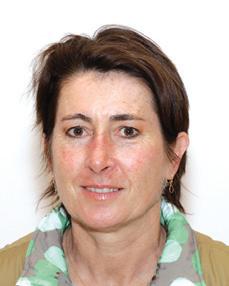
In 1796, explorers Bass and Flinders spent three days mapping Port Hacking in Tom Thumb II, a small rowboat. On three successive Sundays, I enjoyed glorious sunny days as I explored the area on foot. At 16,000 hectares, Sydney’s Royal National Park is vast, and I barely made an imprint with over 150 kilometres of walking tracks!
The world’s second oldest national park opened in 1879, and beaten only by Yellowstone in the United States, the Park is perfect for bushwalking, cycling, kayaking, surfing, picnicking and whale watching. During spring you’ll see wildflowers in full bloom, with pink, red, yellow and purple colours everywhere, and over 700 plant species including angophoras, grevilleas and banksias. The scenery is varied and spectacular with waterfalls, coastal cliffs and beautiful beaches.
After catching Australia’s oldest commuter ferry to Bundeena, on the southern shore of Port Hacking, Ian Wells our guide from Royal Coast Walks, led our small group along Jibbon Beach. The annual migration of humpback whales occurs until November, and we looked for the tell-tale sign of a blow of water in the air. We viewed ancient Dharawal
aboriginal rock carvings, with depictions of killer whales, stingrays and wallabies, then followed the coastline and headed back through scrubland.

Rosamund, a very fit outdoorsy type enjoyed it so much, she was determined to do the two day coastal walk to Otford. “Five star camping!” is how Bill who works for the National Parks and Wildlife Service described it. “They even cook you gourmet meals,” he added somewhat disparagingly, which to me, only added to the appeal of the overnight option.
The following week I got on the train to Loftus from where you can catch the historic tram into the park. Young boy scouts were clearly enjoying the ride, their squeals of delight proving too much for the older travellers on board. From here I walked along the Honeymoon track down to the historic village of Audley, where children splashed about as they paddled towards Kangaroo Creek, with rowboats available for hire from the historic boatshed. I went bushwalking further on the Robertson’s Roundabout track.

A rustling sound led me to an echidna, who upon sighting me, rolled up into a ball, its spikes providing a natural defence. Reaching a high escarpment, I viewed the Hacking River far down below.


Once a month, the community of artists living in Bundeena and Maianbar open their studios to visitors. I walked from Bundeena across the camping ground at




Bonnie Vale, past tents and heritage holiday shacks, along a long beach with fishermen catching brim and whiting, and waded across a creek, perhaps not the wisest way, but a short cut to Maianbar. Here I visited several studios filled with ceramics, oil paintings and exquisite decorative glass and jewellery. Unable to decide on the prettiest brooch, I will have to return again soon.

With an artist’s trail, beautiful beaches and bushland, Sydney’s far south guarantees a great day out
We viewed ancient Dharawal aboriginal rock carvings, with depictions of killer whales, stingrays and wallabies, then followed the coastline and headed back through scrubland


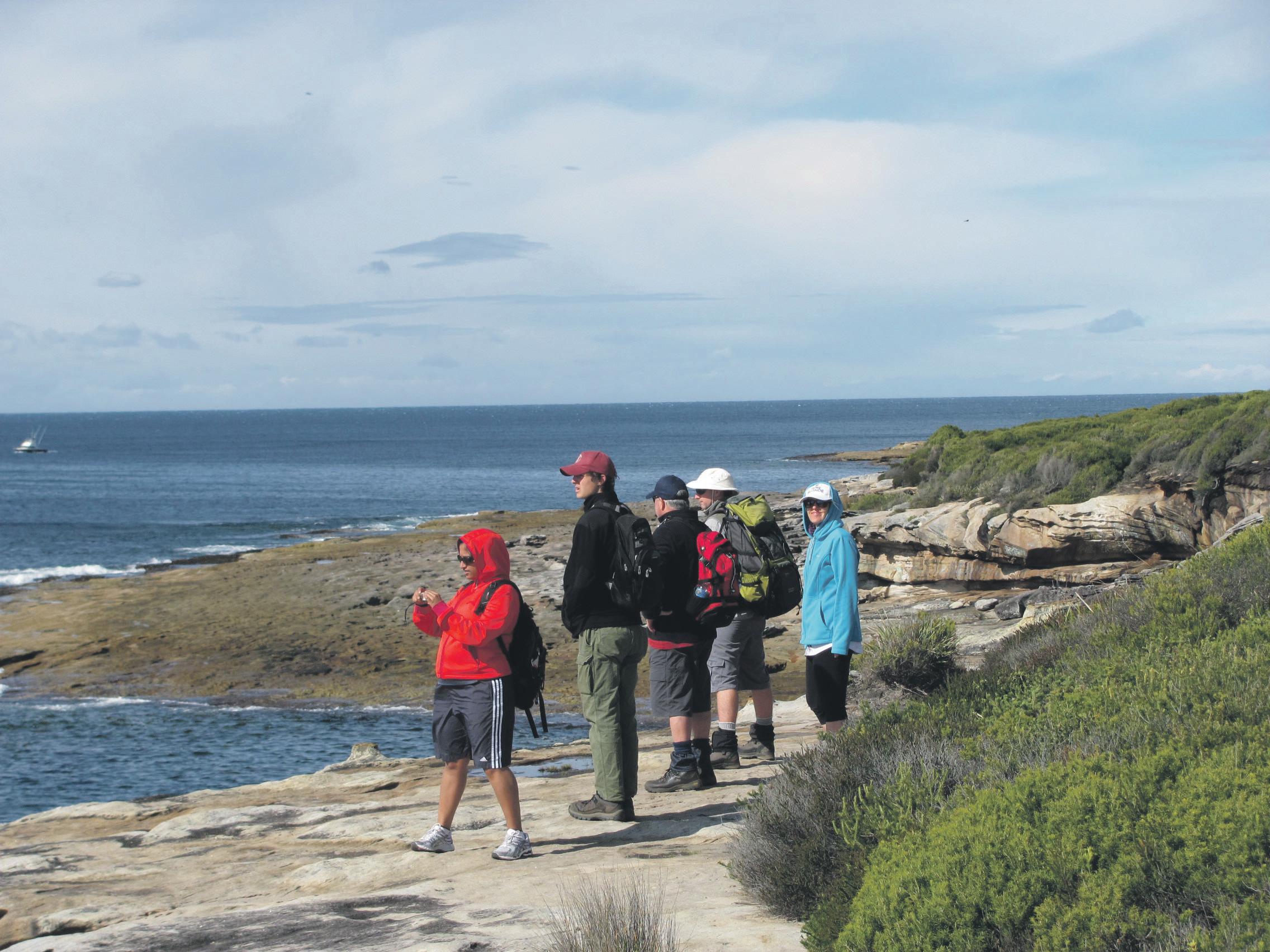


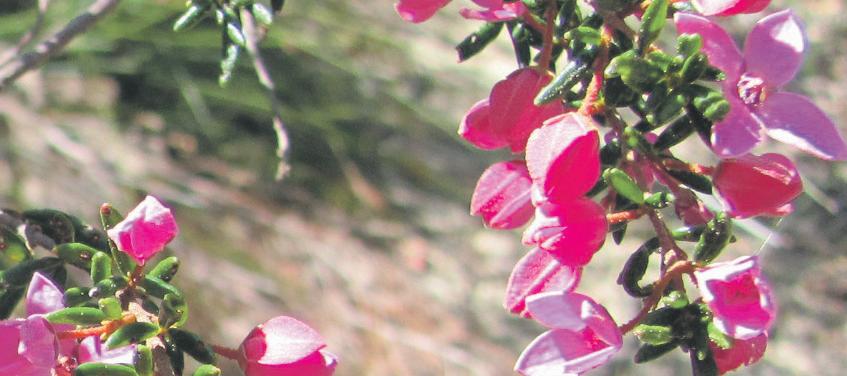
Getti
If travelling by train, head for Cronulla for the ferry to Bundeena. Alternatively, catch the Waterfall service alighting at Loftus from where you can catch the tram, a delightful 2km journey run by enthusiastic volunteers. You can then take the easy wheelchair accessible Bungoona Path loop walk, or walk down to Audley. City Rail www.131500.com.au Tel: 131-500. If travelling by car, you’ll be able to access much of the park, including three of the most beautiful beaches in Australia – Garie, Burning Palms and Wattamolla. From Sydney, Audley is 30 kms south on the Princes Hwy. There are few drives more scenic than the route from Audley to Stanwell Tops.

iN side R ’s ti P
For bushwalking, wear sturdy footwear, bring insect repellent, water and food. The signage is two sided. View both, to get your bearings. The Art Trail is held on the first Sunday of each month, providing an opportunity to meet artists in their studios. www.arttrail.com.au The easiest way to discover the park is the 3 hour scenic river cruise. www.cronullaferries.com.au / 9523-2990.

Whe R e tO stAY
Accommodation at Bundeena and Maianbar include B&B’s and holiday rental cottages. Try Ray White Bundeena www.raywhitebundeena.com.au / 9527-7733, Century 21 Bundeena www.century21.com.au / 9523-8800 or Stayz www.stayz.com.au. You can camp within the park at Bonnie Vale or North Era with bookings through the NPWS. The YHA at Cronulla provides budget accommodation. www.yha.com.au / 9527-7772
Whe R e tO e At
While Audley has a restaurant offering standard fare, I’d recommend bringing a picnic or packed lunch. Bundeena has a few cafes including the Passionfruit Café.


fu R the R i N f OR mAti ON
Drop by the Royal National Park Visitor Centre at Audley www.nationalparks.nsw.gov.au / 9542-0648. Royal Coast Walks www.royalcoastwalks.com.au
/ 8521-7423 offers several bushwalks and kayaking trips including a 30km two day walk camping overnight at Wattamolla.One day and two day walks following the coastline are also offered by Life’s an Adventure www.lifesanadventure.com.au / 9913-8939. The coastal track is regarded as one of Australia’s best hiking experiences. With all meals, a knowledgeable guide and tent set up for arrival, it represents great value.Sydney Tramway Museum at Loftus operates a tram to the Royal National Park on Wednesdays and Sundays www.sydneytramwaymuseum.com.au / 9542-3646.
 BY CHITRA SudARSHAN
BY CHITRA SudARSHAN

In the old colonial days, the ‘Great Game’ was a reference to the rivalry between Russia and the British colonialists in India, over Afghanistan. Later, the ‘New Great Game’ was the moniker given to the conflict between the Western powers and Russia and China over Central Asia’s oil and natural resources. Across the Himalayas, in the east, another great game has been on for some time now between the two Asian giants – India and China. The fight began over Tibet and now includes Northeast India, Myanmar, Bangladesh and the Indian Ocean –one that will significantly impact the course of global politics, according to Bertil Lintner, and he calls it the ‘Great Game East’. Lintner has even devoted one chapter to IndoBangladesh relations in his book.
Strategically located at the crossroads of the Indian subcontinent, China and Southeast Asia, the north-eastern states of India and the continuing armed
strife in that sector hold the key to understanding the true complexity of the hostilities and political ambitions that Asia’s two giants harbour. In the Great Game East: India, China and the Struggle for Asia’s Most Volatile Frontier, (Harper Collins, India) Bertil Lintner – acknowledged as one of the foremost experts on insurgencies in the region – unpacks the layers and layers of complex political intrigues and spy networks that define the Great Game East, and looks at the geopolitics of that region. The defining rivalry is the India-China one, which saw a border war in 1962, and an uneasy peace since. Spies and agents from both countries have been stirring up trouble in the volatile frontier areas all these years. Besides, intelligence agencies of various other countries (the United States and Pakistan, among them) have also been keeping a sharp eye on the developments in the region.

Lintner believes that at the core of China’s covert interference in the region is the Indian Ocean which the country wants to penetrate for strategic gains, without India’s interference.
China’s role in north-eastern
India is not to create, but ‘maintain instability’ because it wants to keep India out of Myanmar, says Bertil Lintner. The intricate net of intrigues has kept the game going, the writer says.
“In 1950, China invaded Tibet after which the Americans began to support the cause of an independent Tibet. In 1959, the Dalai Lama fled to India and China was angry. In a few years, China attacked India resulting in the border war of 1962 and by the mid1960s, China decided to support the rebel movement in the northeast. Pakistan was also interested... Difficult games are being played in
China’s role in north-eastern India is not to create, but ‘maintain instability’ because it wants to keep India out of Myanmar, says Bertil Lintner
the region,” says Lintner. Myanmar with its ethnic groups along the border was in the crosshairs. Lintner says, “It is difficult for Myanmar to lessen its dependence on China; they can’t do it. China will always be there... As for Myanmar’s ethnic conflicts, they will always be there. These conflicts have existed for hundreds of years - starting with Myanmar’s ancient warrior kings waging their wars against the non-Myanmarese nationalities and continuing to this day - and are not likely to go away any time soon”.
Lintner, who is recognised as an expert on Myanmarese issues as well as on South Asia, was one of the first outsiders to reach Myanmar’s isolated northern-held rebel areas; and reach China from India’s northeast after a 2,275-km
overland trek in 1985. Lintner has been the FEER correspondent for Southeast Asia for 20 years, and has written several books on Myanmar, the Golden Triangle, South East Asia, China and Korea. This book needed to be written – as few comprehend or appreciate the myriad of complexities or the significance of that region better than Lintner. The book has an entire chapter on the relationship between Assam and Bangladesh, and it will surprise the reader: the massive migration from Bangladesh and the conflicting separatist movements and the struggle for land. This is a mustread for anyone who wishes to gain an understanding of the political future of a continent, or the world.





Christmas is a universal festival in a country like Australia. Schools and workplaces have their own Xmas parties. Children, no matter of what religious denomination, expect to receive presents at Christmas-time and to show those gifts to their friends. Shopping centres play Christmas songs and are well-decorated at Yuletide and thus, one cannot escape a permeation of the Xmas spirit
At a time of such festivities, we need to ponder on those families which have been dealt a sudden shock, such as by Hurricane Sandy when numerous people were affected. Some have had partial losses such as the loss of children’s toys, whilst others virtually lost everything. Several neighbourhoods have seen incredible destruction by the force of waves and by fire, such as along the waterfront in Manhattan.
care and solace from the many philantropic organisations in the USA. They were set up by super-rich people like Ford, Carnegie, Bill and Melinda Gates, and Buffet. President Obama in his victory speech, rightly told a cheering audience, “We believe in a generous America, in a compassionate America …”
Likewise, talented young Americans who are hit by the burdens of recession can expect, in a non-discriminatory atmosphere, to be helped along. Obama continued his speech, “...in a tolerant America open to the dreams of an immigrant’s daughter who studies in our schools and pledges to our flag, to the young boy on the south side of Chicago who sees a life beyond the nearest street corner, to the furniture worker’s child in North Carolina who wants to become a doctor or a scientist, an engineer or an entrepreneur, a diplomat or even a president.”
i t would be hoped that the super-rich in Australia would set up philanthropic foundations as the super-rich Americans have done.
Obama’s poignant words apply to all countries, particularly those which are doing well like Australia and which take pride in being considered as democratic. They apply to India as well, and they encapsulate the teachings of Mahatma Gandhi.
Here in Australia, we have been spared such devastation. However, there have been other shocks. In recent weeks and months, numerous workers, such as in manufacturing industries, have suddenly been made redundant; their families cannot celebrate as they would normally do. Early November saw the loss of 400 manufacturing jobs in Victoria alone.
The Australian Manufacturing Workers Union (AMWU) made a cash donation to help support the homeless with emergency accommodation. Some of these could actually be members of the union who now face hardship.
The much-loved Darrell Lea confectioners are expected to close stores and reduce production while cutting some 160 jobs. There are thousands of jobs being lost in the motor car industry, in pharmaceuticals and in Qantas.
Indian readers can take time-honoured concepts of Indian philosophy to draw a roadmap (marga) for the future. That is why Christmas and New Year is considered as a good time for making resolutions.

Those who are well-off can reach out to those who are suffering (dukha) and give them solace (dan) which may or may not be material help; there is no substitute for sympathy which is sincerely given. The term dan is akin to the French donner and English donation. Giving can be material or emotional.
those who are welloff can reach out to those who are suffering (dukha) and give them solace (dan)
Those who are doing well should refrain from the greed (tahna) of constantly acquiring more. They may also do well by refraining to flaunt their wealth or indulging themselves excessively in the pursuit of sensual pleasures (kama tanha), whilst those around them suffer for want of the mere basics.
The pain suffered by workers and their families gets exacerbated when company management gets rewarded with higher pays and bonuses, despite their workers getting retrenched.
It is situations like these that put heavier pressure on charitable organisations like the Salvation Army. It would be hoped that the super-rich in Australia would set up philanthropic foundations as the super-rich Americans have done.
However, the state of Victoria has been said to have quietly gained some 13,000 manufacturing jobs in the private sector (Ian Porter, Fairfax Media). One would wish such enterprises every success.
Those who are suffering the aftermath of Hurricane Sandy can expect to receive some
Those who moan that the Indian community in Australia has numerous associations based on different languages and religions should consider that at times like Christmas they might actually be a strength, because they may be the best placed to provide companionship and solace to those members of their communities who feel distressed and lonely.



Let me close with the following lines from Rabindranath Tagore’s celebrated Geetanjali: Where the mind is without fear and the head is held high; Where knowledge is free; Where the world has not been broken up into fragments by narrow domestic walls; Into that heaven of freedom, my Father, let my country awake.
(Geetanjali, Bengali 1910, English 1920)
Christmas is the season of giving, so let’s be generous in word and deed to those less fortunate than us




After eighteen months in India, my time as ‘An Aussie Guy in Chennai’ is now drawing to an end. Over the last year and a half I’ve had made lots of friends, seen some amazing sights, learned a lifetime’s worth of lessons, suffered from ‘Chennai chunder’ twice, and significantly improved my knowledge of Hindi. (Unfortunately, the latter came at the expense of tongue-twisting Tamil, which I have failed to pick up despite some attempts).


I have battled the bureaucracy, the heat and humidity and the traffic, and been hit at low speed by a motorbike (the driver was most apologetic, and I walked away with barely a scratch). I’ve visited north, south, east and west around the nation which I now feel is somewhat an adopted home for me.
Throughout my time in India, one question I have grappled with is why I like it here. Some say it’s the preferential treatment I receive as a foreigner –although that actually makes me rather uncomfortable. Some have pointed to the exoticism and glamour of living abroad, although I promise there were just as many unpleasant experiences as there were enjoyable. A Hindu approach might suggest that I lived in India in a previous life, and felt that I had come home. A Muslim or a Sikh might suggest that the sense of community is responsible, being close to the ummah or the sheraan di kaum, though I might not know it. A Marxist might tell me that I have turned my back on the materialist West, but anyone who shops in India knows that’s not true!
Two years ago I wrote an article entitled ‘Indophile’ in which I declared my love for India, and spoke of the everyday spirituality which enchanted me with every visit. Having now lived here, I can reaffirm these sentiments. Yes it’s dirty, polluted, crowded, frustrating, difficult and all the rest of it. However these unpleasant facts of life might only serve to heighten one’s awareness of other aspects. Unlike the subdued rises and falls of life in Australia, the highs and lows of life in India are extreme, terrible and beautiful.
India is really a country that you feel. As a feeling person, as a spiritual person, I can honestly say that I felt at home here and would stay longer, possibly forever, if I had the option. Perhaps I am actually suited to Indian life?

Perhaps it was stepping out of my own society and into one where I was anonymous, where I could be whoever I wanted to be, where I would be judged differently – isn’t that what so many of us love about being in a foreign country? Being a novelty soon wears off, but the feeling of breaking free from the shackles of our native society is a powerful drug. How many Indian Australians love their lives in Australia for that reason? When we leave our native country to live abroad, we offer a contract to our own selves; that we will relish the positive aspects of life in a new nation, with the negatives as a small cost. Without such a contract, living abroad wouldn’t seem worth it: “Oh yes, Australia has its problems, but look at the benefits!” is a phrase which can be applied both ways. Not to mention the fact that we often judge our own culture much more harshly than we do others – how many people pass off (or don’t notice) negatives in foreign countries when the same thing in their own would make them cringe? Maybe this is the secret to why I love it here.
Perhaps these questions will never be answered. At the end of a year and a half in India, there are still many questions to be answered, aside from these.
Why is ‘India the superpower’ an ideal fast-becoming reality, yet development for the average Indian is largely an elusive dream? Why, after 65 years, has so little changed in the nation’s relationship with Pakistan? Why is Indian politics so dominated by stuffy, bureaucratic, corrupt old men when the country’s youth have so much exciting potential?



Why is Salman Khan not in jail? Maybe like the reasoning behind my affection for India, we’ll never solve these. But India is a riddle which might not need solving.
As Dev Patel’s character in The Best Exotic Marigold Hotel said time and time again, “Everything will be alright in the end. If it’s not alright, it’s not the end”. Say what you like about the film, truer words were never spoken about life in India – there is hope, no matter how futile, that things will be better. It’s a lesson we could all use from time to time.
At the end of a year and a half in India, there are many questions to be answered. Why is ‘India the superpower’ an ideal fastbecoming reality, yet development for the average Indian is largely an elusive dream? Why, after 65 years, has so little changed in the nation’s relationship with Pakistan? Why is Indian politics so dominated by stuffy, bureaucratic, corrupt old men when the country’s youth have so much exciting potential? Why is Salman Khan not in jail?
Living in India has brought about a strange, comforting and paradoxical sense of belonging in the author
Nalanda is situated about 80kms south east of the city of Patna, capital of the state of Bihar in India, and is home to the ruins of the ancient Nalanda University. Lord Buddha is said to have visited this site.
Historical sources indicate that the ancient and original Nalanda University had a long and illustrious life which lasted almost continually for 800 years from 5-12 century CE. It was the first residential international educational institution in the world which housed about 10,000 students and 2000 teachers. Its educational model emphasized inter-civilizational connections and the development of interAsian interactions. India at that time was considered a leading place for imparting knowledge, and Nalanda’s reputation attracted scholars from distant countries such as China, Turkey, Korea, Japan, Tibet, Mongolia, Sri Lanka and Southeast Asia.

Close to the end of the 12th century, Nalanda was destroyed by invaders. The period from which Nalanda ceased to exist was a time that the great universities of the western world came into being, marking the shift in knowledge production and dissemination from the east to the west. Only Al Azhar in Cairo (972 CE), Bologna in Italy (1088 CE) and Oxford in the United Kingdom (1167 CE) had been founded before the destruction of Nalanda.
Recently, the idea of a new university has been mooted, at the site of this old institution of earning. In June 2007, the Government of India announced the establishment of a new university close to the site of the original Nalanda.
A Nalanda Mentor Group was constituted under the Chairmanship of Nobel Laureate and Bharat Ratna awardee Prof Amartya Sen. This included members from Singapore, Japan, China, Thailand, UK and India. The Parliament passed the Nalanda University Act in 2010 following which the University came into existence on 25 November of the same year, as a non-state, nonprofit, secular and self-governing international institution with a continental focus that would bring together the brightest and the most dedicated students from all countries of Asia.
Nalanda University is that its revival was welcomed not only by Indians, but also by Member States of the East Asia Summit (of which Australia is a member) through a Joint Press Statement issued at the EAS Summit in Thailand in October 2009, to strengthen regional educational cooperation, understanding and appreciation of each other’s heritage and history. Nalanda University is an international university and has been declared as an institution of national importance.
Inter-Asian linkages, such as those which grew out of Nalanda, had declined during the colonial period, but have been revived in recent decades. It is anticipated that Nalanda will again play a major role in Asian connections similar to the one it played in the past. The University aims to build for contemporary Asia, an appreciation of Asian achievements and mutual learning as exemplified by the original Nalanda.
The University regards East Asian Summit member states as partners and sees their role as central to forming links between nations separated by geography, but linked to one another for centuries. The most obvious interactions will be through collaborative projects, University level tie-ups, and student exchanges. It is hoping to attract the brightest students and faculty from around the world and establish a global centre of scholarly excellence.
site of the original Nalanda University. The University plans to embark on a new concept of campus building by emphasising sustainability and environmental sensitivity at all levels while developing the campus. As an integral part of this innovative approach, the development will consciously ‘walk’ the path of Net Zero. The ultimate aim is to achieve a campus that is Net Zero Energy, Net Zero Emission, Net Zero Waste and Net Zero Water.
The University plans to start the first two of its seven Schools - the School of Ecology and Environment and the School of Historical Studies - in 2014. Other Schools will be started subsequently in phases. The University will reach its planned maximum intake of students by 2021-22.
The estimated cost of establishment of the University, excluding the cost of land measuring about 450 acres, which has been provided free by the Government of Bihar, is expected to be Rs 2150 crores or $400 million approx. In the Joint Press Statement, the member states of EAS had encouraged appropriate funding arrangements on voluntary basis from governments and other sources, including public-private partnership. Though some EAS member states have already made or offered some contributions to the University, bulk of the funding at present is being provided by the Government of India.
Summit, has been supporting the project. It was party to the Joint Declaration issued by EAS in Thailand supporting the establishment of Nalanda University. The Government of Australia has also offered to finance a Chair in the field of Ecology and Environment at the University, and Prime Minister Julia Gillard during her recent visit to India confirmed that this grant would commence in 2013.
The first gift to the University has also come from Australia in the form of a large collection of books on medieval Chinese and Korean history. This is a collection by late Prof Ken Gardiner of Australian National University.
An incidental link of the University with Australia pertains to personnel – the present High Commissioner of India, Mr Biren Nanda and the Consul General in Sydney, Mr Arun Goel were among the first few officers in the Ministry of External Affairs to handle this project on behalf of the Government of India. It is hoped that they will maintain their link with Nalanda and encourage further close participation by Australia in this prestigious project.
More details at www.nalandauniv.edu.in
Sudhir Kumar is a former member of the Indian Foreign Service and had served as a Consul in the Consulate General of India, Sydney from 1999 to 2002. After retirement from the service, he is presently working as a Consultant with Nalanda University

Historical sources indicate that the University had a long and illustrious life which lasted almost continually for 800 years from 5-12 century CE
The Government of Australia has offered to finance a Chair in the field of Ecology and Environment at the University, and Prime Minister Julia Gillard during her recent visit to India confirmed that this grant would commence in 2013.
$100
GIFT VOUCHER

$100 shop gift voucher conditions:

1. When you sign up a 2 year contract of mobile service or mobile broadband service in our store
2. One voucher/per service, the more you sign, the more you get.

3. You can redeem the voucher only for mobile phone accessories in store
4. Gift voucher is not redeemable for cash
5. To qualify for this offer, you must mention this advertisement before signing up.
6. Offer ends Dec 31, 2012 unless extended


7. Gift voucher is valid for 2 years from the date of issue.
Notes:
In 1992, in the upstairs room of an inner Sydney restaurant called Shapad Raman, a gathering of like souls sparked an interest in Vedanta classes


What you cook as meals and what you eat is mainly determined by what is available in your pantry. If it includes healthy nutritious food, that is what you would be eating; but if your pantry is either not stocked with healthy options or stocked with calorie laden foodstuff, you would eat out or get takeaways or end up preparing high-calorie meals.
The first step towards a healthy diet is to stock your pantry with healthy foods and throw the extra calories, sodium, fat, sugars and preservatives into the bin.
Here is a list of food items that your pantry could do without:

One of the worst foods in the pantry is sweetened beverages, as these are just empty calories without providing any nutrition. Even diet soft drinks have artificial sweeteners and caffeine which may not be good for us. Instead, opt for natural refreshing drinks like lemon juice, jaljeera, coconut water, green tea or fruit juice. Drink plenty of water, as it is the best drink.



High sugar cereals made with refined sugar and flour contribute no nutrition and do not even satisfy hunger for a long time, as these are high GI. Some sugarladen cereals are even worse than candies. Loaded with white flour, most often from wheat, corn or rice, and refined sugars such as high-fructose corn syrup, most breakfast cereals are not a good way to start the day. Cookies and candy bars are also high GI carbohydrates and no nutrition, and will provide you with only momentary boosts of energy. Pick cereals and cookies with wholegrains listed as one of the first ingredients and those that are high in fibre.
These foods are laden with saturated fats, trans-fats or
hydrogenated fats. Trans-fats are chemically altered saturated fats that show up on food labels as ‘partially hydrogenated’ or ‘hydrogenated oil’. Hydrogenated fats are created when oil has hydrogen added to it - a process designed to extend the shelf life of the products that contain it. These fats raise levels of bad (LDL) cholesterol while lowering levels of good (HDL) cholesterol, which can lead to heart and other health problems, and have also been associated with some cancers. These are also high in sodium and may cause hypertension. Try to make your own sauces and gravies at home with fresh ingredients, less salt and no preservatives.
Products made from refined flour such as white bread, bagels, pasta, crackers, tortillas and cookies are low in GI and do not make you full. White flour has been ground, processed and stripped off the outer layer of fibre and nutrients. Replace these white flour products with products made with wholegrain flour which contains more nutrients and fibre such as multigrain, soy linseed or pumpkin seed bread, wholewheat bagels and buns and oats. Replace rice with low GI brown rice or basmati rice.

Processed meats are high in saturated fats, calories and sodium. These include sausages, salami and ham. They also contain chemicals that are known to be carcinogenic. Try to avoid processed meats or at least limit your intake and balance by eating more fruits and vegetables. Even better, choose organic meat and unprocessed chicken and turkey, and round it out by eating more fish as a source of protein to get more omega-3 fats.
Chips
Open a packet of potato chips and it is gone. This is one food you start to eat and never seem to stop until the whole packet is finished, especially if you are sitting in front of the television or working on a computer. But chips are high in salt, oil and mostly trans-fats. These just add empty calories and provide no nutrition. Instead, try snacking on nuts or unsalted popcorn.

a high-calorie meal with a salad, but if it full of high calorie dressings. You are better off having a regular meal. It is sometimes surprising as to the amount of fats and sugars in salad dressings. And generally, fat reduced salad dressings have more sugars than regular salad dressings. Most of the bottled salad dressings are very high in sodium too. Even if a bottled salad dressing is low in sugar, salt and contains no bad fats, most dressings bought at the supermarket contain preservatives, artificial food dyes – and some contain monosodium glutamate. These holidays, clean up and stock your pantry carefully and enjoy healthy food.
Fat reduced salad dressings have more sugars than regular salad dressings
Try to avoid processed meats or at least limit your intake and balance by eating more fruits and vegetables.





Parents and educators often assert that they would like children to have a healthy self-esteem and to be resilient in the face of change and uncertainty. ‘Self-esteem’ is a nebulous concept and it is more probable that parents and educators use the term to indicate that they want their children to have confidence and a belief in their own abilities. In practice this should be seen when a child shows determination when faced with difficulty, who will make repeated efforts to master something when failure has been experienced, and who will also know when to stop if something is not quite working out.

It is often assumed that encouragement is all that is required to build a healthy selfconcept. Praising a child can be very appropriate in reinforcing desired behaviour. However in my experience, over-praising a child is actually counterproductive for several reasons. Firstly, overpraising gives a child no room to grow. After all, from where can a child grow? “That is SO awesome and I am numb with amazement”. Secondly, too much praise can make a child seek outside affirmation and can actually reduce the capacity for child to develop their own personal standards against which to strive. Thirdly, over praise tends to focus on what is done (the outcome), rather than on how achievement feels. Thus, the outcome can be affirmed when the processes matter more.
A more confidence-building approach to encouragement would take the form of noting elements of performance and the journey. Thus, acknowledging effort through observations such as: “I notice that when you try your best you seem most happy?” or “It is good to do well and I can see you are happy. What makes me happy is that you are pleased with your effort.”
Sometimes what appears to be encouragement can actually be quite destructive implied criticism. This is particularly the case when the prompt to encourage comes from a parent or teacher’s desire to have their own values and
standards imposed on another.
So, for example, a well-meaning parent may encourage hours of study or revision to instil an understanding of academic excellence and success.
However, some children struggle academically and may feel like the ‘encouragement’ places them under pressure. Worse, it can actually undermine the child’s sense of worth because they will always feel not good enough. I meet so many children who are far behind their eyes because they are not like their academically high achieving older (or younger) brother or sister.
Articulating the struggle for the child is a good foundational step in building a sense of understanding and empathy. After all, children who understand themselves are likely to be less self-critical and more self-aware. This is intrinsic to feelings of self-confidence and self-worth. In this way a child can learn what they find hard and then learn to manage strategies around dealing with things they find difficult.
One significant area where self esteem and inner confidence can be built arises in the realm of friendships. All parents and educators know that friendships come and go, they change and they can be a source of great happiness and sometimes also great pain.
If a child asserts that they are excluded from a friendship group it is common for a parent or teacher to reassure them by saying, “Just try harder” or
“Friendships don’t matter” or even “If you show initiative and be confident they will follow”. None of these statements actually embodies close listening or understanding. A response like “Sometimes you feel left out and that makes you feel a bit lonely” is more likely to foster a sense in the child that the adult understands them. It may also lead to tears. Protective parents and teachers may be more interested in solving the problem that being still with feelings and managing tears. Tears however, dry.
Unfortunately, a focus on solving the problem generally applies logic and rationalisation and misses the feelings aspect, thus undermining a child. Undermining and non-validation can last much longer.
This type of listening articulates and normalises feelings and is basic to validating a child. It also gives the children an opportunity to further refine their own values, thoughts and feelings around the issue.
Parents and teachers may ask, “But doesn’t this simply instil in the child a sense of negativity?” After all, articulating feelings of being left out and lonely sounds all very negative. The reality is, in fact, otherwise. Starting with what is real means that the child can learn to articulate at least what is happening within them. This is essential as self-understanding builds self-awareness and also confidence. It also leads to a better understanding of others. After a child knows they are understood, a discussion
about inclusion and friendships can be broadened. In this way, the issue can be dealt with, whilst boosting the child and increasing their independence and capacity to understand.
Learning to ‘fail’ can be a significant source of learning, maturing and growth. Both self confidence and resilience (‘stickability’) can be nurtured in an environment where the process matters at least as much as the product. Setting goals and challenging oneself to achieve them can place a child under pressure to perform. Goals can bring out the best in us, can encourage focused effort and also bring attention to helping a person be their best. In doing so, a person learns about himself.
When a goal is set but not achieved, it is often characterised as ‘failure’ or rationalised through excuses and logic. But the real feelings of disappointment need to be articulated and felt rather than suppressed, as otherwise there can be significant emotional blocks to taking a risk and trying. In this way, achievement and effort can be understood and resilience built. Following articulation, parents and teachers can guide the child through the self-talk required for restoration. Thus, moving from “Sometimes it can be disappointing when we miss out on something we want” (articulation of feelings) to “If you were to give it another go, what would you do differently and how could I support you with

Praising a child can be very appropriate in reinforcing desired behaviour. However, overpraising is actually counterproductive.
that?” (resilience and support).
An approach like this makes non-achievement of goals less likely to be perceived as failure, and much more likely to be a learning and confidence-building experience. As children get to know themselves, they can get better at setting goals and learning how to adjust to changes, and they can focus on the process of achievement, rather than purely on the outcomes.
We all want children to learn to be independent, confident and resilient. These notable qualities are built through the way the normal stuff of life is managed. Too often parents and educators bring a rational, linear and logical approach to solving problems and being supportive. However, often well-meaning support is misplaced and actually undermines the child.
Starting with the child and affirming them for who they are is likely to build self-esteem, self-understanding and feeling of confidence. Moreover, a focus on the means and processes helps children to integrate feelings and thus understand themselves whilst also learning about the nature of achievement and resilience.
An effort should be made in understanding children’s awareness of themselves when tackling esteem and self-worth issues
Learning to ‘fail’ can be a significant source of learning, maturing and growth.Photo: Events Photography Melbourne/Ravinder Singh Jabbal



 BY TALIA KAUR
BY TALIA KAUR
Military fashion as a trend is nothing new; in fact, it’s been on the rise since 2008, coming back every few seasons; but this time it seems like it’s here to stay. In 2012 we saw the military trend evolve from a tough edgy look to a more chic look in collections by Alexander Wang, Tommy Hilfiger and Victoria Beckham. Items like army jackets, skinny cargo pants and lace-up boots are easy ways to wear this trend and of course, the earthy palette of olive greens and neutrals along with clean cuts is a perfect compliment to every wardrobe. This is a perfect trend to take advantage of – once you get a few staple military pieces in your wardrobe and you know how to style them to suit your personality, you’ll be set for many seasons to come! Here are a few ways to rock your military chic look.

Rock Chic
This style is all about toughening up your look with detailing such as structured jackets, shoulder pads and large gold buttons. Gold detailing and ornate trims really set off the slick military cuts and add a little extra energy to your outfit. An easy way to pull off the rock chic look is with a simple, yet edgy military jacket – it’s a musthave! These can be of various types with different lengths, fabrics, cuts, embellishments and shades – just experiment and wear a jacket that feels comfortable and reflects your personality so you feel confident when wearing it. A personal favourite that gives a great edge to an outfit is a khaki coloured jacket with black leather sleeves. Pair it with some black skinny pants or shiny leggings and studded ankle boots or even a pair of killer heels, and you’ve got yourself the ultimate rock chic military outfit.

The key to keeping military looks feminine is to choose fitted pieces. The most feminine way of wearing this trend would have to be by wearing skirts. Military skirts ending just above the knee are classy and versatile – team them up with a white or nude formal shirt to dress it up, or a plain black or white t-shirt to






dress it down. Military jackets can also be played up with a feminine touch. Pair a red military jacket with a dark coloured floor-length gown and finish off with some jewels. It adds a pop of colour and edge, while still remaining soft and ladylike. Another way to make this trend feminine is a brass-buttoned jacket with a peplum finish. The peplum style has been big the past few months and is a super girly addition to any outfit. The cut allows it to show off your curvy silhouette, but the darker green colour still ensures your keeping up with the military trend. A little black dress is also a no-fail option, but look for militaristic vibes such as button-front details or inclusions of khaki colours. To maintain that edgy feel, accessorize your LBD with a fur collar, some statement jewellery and a pair of heels.
This look is probably the most easy to achieve. A military trend shirt is a very versatile piece of clothing. You can tuck it in or leave it open. You can use it as an outer layer or wear it under a jacket. Chose an army-style buttoned shirt, leaving it open and contrasting it with tighter, more polished pieces inside. Play around with proportions too – a slim pencil skirt with a loose khaki sweater on top with some ankle boots is a perfect casual look. A pair of pants is also a basic yet versatile military trend item. It works for everyone as it suits all types of body frames. For a casual look, opt for distressed, day pants in shades such as olive, khaki and even navy. These pants should be worn with a very simple black, white or nude coloured top.
Not only does this immediately make the outfit look and feel more relaxed, it also allows all the attention to be focused on the trousers. Feel free to add a few fun necklaces and bangles or a printed bag since this is a casual look. Even the most basic militaryinspired pieces deserve a dose of print. A leopard-printed bag is the perfect offset to a mix-and-match casual military outfit.

However, as with any heavily themed trend, the trick is never to go overboard – one piece per outfit is always enough –whether it’s incorporating the coolest military trench coat into your wardrobe, or pairing khaki coloured jeans with a favourite striped shirt. Don’t be afraid to experiment and see what you’re most confortable wearing because in the end, pulling off the military trend is all about having confidence!
Play around with proportions too – a slim pencil skirt with a loose khaki sweater on top with some ankle boots is a perfect casual look


For a solo traveller, arriving in a city as compact and welcoming as Chiang
Rai in northern Thailand provides the comforting reassurance of being able to relax and enjoy the journey that lies ahead. At the airport I was met by my driver wielding a large sign that read ‘Mr Petra and party’, ready to bear me for the short drive to The Legend, a beautiful resort with rooms scattered in a tropical garden setting. I was ushered into the open air dining room with views of the sunset over the Kok River. My vegetable curry was delicious. Northern Thai cuisine is distinctive and full of flavour, based more on rich curries than the lighter, Chinese-influenced food of central Thailand.
While I have visited Thailand many times, I wanted to return to Chiang Rai, the smaller quieter sister city to Chiang Mai, with rugged peaks, limestone cliffs, lush mountainous forests, hill-tribes and the mighty Mekong River, all nearby.
Located 785 kilometres north of Bangkok, Chiang Rai lies near the Golden Triangle, where Burma, Laos and Thailand

converge. Founded by King Mengrai in 1262, it was the capital of Mengrai’s Lanna Kingdom for only 34 years before being superseded by Chiang Mai and was subsequently conquered by Burma, remaining under Burmese rule for several hundred years.
Later I walked to the renowned night market that sells handicraft items made by hill tribes. A blocklong, it is arranged around a stage where traditional Thai music and dance is performed.

After a restful sleep in my four poster bed, I set off early the next morning, heading for the fresh produce market. With well maintained footpaths and helpful street signage, Chiang Rai is ideal for exploring on foot. After recharging at a cafe selling locally grown organic coffee, I visited many of the temples to be found at every turn that can be enjoyed in quiet solitude.
Buddhist temples like Wat Doi Chom Thong on the outskirts of town possess a humble elegance, decorated with simple hard-carved wood sculptures and painstakingly assembled mosaics. Perhaps one of the most beautiful temples in Thailand is Wat Phra Kaew, the city’s most revered, set in a beautiful garden that dates from the 13th century with several fine bronze Buddha statues.
I was then met by my driver Air, for the 90-minute journey north to Lanjia Lodge at Kiew

Thai Airways International flies to Bangkok with helpful ground staff waiting to whisk you to the gate for your short connecting flight to Chiang Rai making the journey effortless.
Taxis are inexpensive. The Green Bus line is recommended. Or hire a car and driver, email: luangsay_maekhong@hotmail.com The Chiang Rai Visitors Information Centre has maps and helpful staff.
The Legend Chiang Rai Boutique River Resort and Spa is a short walk from the city centre. Rooms are beautifully appointed, with a lovely garden setting by the Kok river. Tel: 66 0 53 910 400 Email: info@thelegend-chiangrai.com website: www.thelegend-chiangrai.com There are many budget options catering for backpackers with rooms for around $5 per night.

Lanjia Lodge is a great example of sustainable low impact tourism by minimising waste and energy consumption and supporting projects including tree planting. Forming partnerships with surrounding villages has provided employment and training opportunities, and encouraging guests to learn about the culture of the hill tribes aids their preservation. Meals and a range of activities including guided village visits and a massage are included in the tariff. Email: info@ asian-oasis.com www.asian-oasis.com
Kuan village, past coffee and tea plantations, rice fields and mountainous forests along a narrow road.
“But where are the other guests?” I inquired on arrival. “Today only you! After lunch would you care for a guided tour to nearby villages to visit the Sharman?” was the response. And so it was that I was told by the Sharman or spiritual healer, that my life would be a long one, with the caveat that the reading can change every fifteen days.
Until then, I had not visited a traditional Hmong Village, where neat timber homes are built upon the earth, the men wear black jackets and baggy indigo trousers, the women are adorned with embroidered jackets, their long black hair tied back. Thailand’s second largest ethnic minority, the Hmong originally came from southern China. I was then shown how to make batik based on traditional decorative patterns. The neighbouring village is Lahu, who originally came from Tibet, their homes high up on the hillside. Some women seated together were amused by my hiking shoes, and several curious children trudged along behind us.

The next morning I woke to the triumphant crowing of a rooster before enjoying a pot of freshly brewed organic Arabica coffee, toast, fruit and a banana muffin. With my guides Sawneng, a Hmong from the village and Ton, I visited an organic tea plantation. The Oolong green tea was refreshing. We then hiked uphill to a waterfall listening to the forest full of birdsong. On reaching the waterfall, we were surrounded by a high canopy of trees.
After lunch, much of it from the lodge’s own vegetable garden, I asked what activities I could do for the afternoon. When rest was suggested, I asked if I could go on
The most memorable part of this journey was slicing through the water towards Chiang Khong, near the shoreline of Laos. Chiang Khong is a pleasant settlement with internet cafes, shops and guesthouses along the main street. It is from here that travellers enter Laos to catch a slow boat to Luang Prabang.
On my last night at the lodge, I enjoyed a relaxing traditional Thai massage, another highlight of

had been.
The next morning as I left, I drove past a village stall selling hill tribe clothing. At that moment, the young girl who had taught me how to make batik recognised me and waved goodbye, her parting smile genuine.
There is magic in the tropical sunset when shades of pink, gold and purple fill the sky. It was while at Lanjia Lodge, while seated on comfy cushions in the open lounge, that I was transfixed by the brilliance of changing colours as the sun receded behind the Mekong River below, and I realised that I was in an altogether special place.
One of the most beautiful temples in Thailand is Wat Phra Kaew, set in a beautiful garden that dates from the 13th century with several fine bronze Buddha statues.


Breakfast, Legend Hotel
Hilltribe performance

Legend Hotel
Bronze Buddha, Wat Phra Kaew

Wat Phra Kaew
Sawneng hiking Lanjia Lodge


Sampling organic tea


Clock Tower, Chiang Rai Batik making Monks, Wat Phra Kaew

The smartphone she held in her hand burned her fingers. She read the text message again. That is all he had sent, a text message comprising a mere ten words: “I can’t do this to her. I’m not coming back. Sorry.”
Ten years of marriage wiped out by ten words. Worse, her husband had not even had the decency to tell her in person. “Sorry” - that single word was neither an apology nor a consolation. As tears slid down her cheeks, she asked herself the question: Why me?
What vital sign of the affair had she missed? His regular absence from home was normal to her. He was a pilot and the very nature of his job called for those trips. Like most wives she had been on the lookout for the classic signs – lipstick on the collar, wrong numbers, unexplained gifts, new additions to the wardrobe and disappearance of money from their accounts. But none of these had happened. When he was home, every moment was spent with her. And yet there was the message on her phone, forcing her heart to believe what it did not want to.
In the next few hours she faced all ten aspects of human personalities.
Kama (Love): Theirs had been a love marriage. They had fought family and society for the right to wed. People had accused them of forgetting all sensibilities for an emotion they were mistaking for love. And just when everyone was finally admitting that they were wrong, lust had truly stepped in and made a mockery of their marriage.
Krodha (Anger): This was the one emotion that she had never shown during her entire marriage. Yet now after the initial shock had worn off, it was the emotion that surfaced first. Anger at her husband, anger at ‘that woman’ and most of all, she expressed anger at her own stupidity. She was even angry with the phone.

Moha (delusion): She derided
herself for getting caught up in the illusionary world of love. She had built her life around what she felt for her husband and was always grateful for what she got in return. But now that the illusion had been lifted, all she felt was betrayal. And she vowed that it would never happen to her again.
Lobha (Greed): She spent a good half hour logging into their bank accounts. From the joint accounts she transferred half of the funds to her personal account. She was tempted to empty the accounts as retribution, then realised that right has its place, but greed would always be wrong. And anything wrong had no place in her future.

Mada (Pride): She took a long time to come to terms with this failing but no matter how much she wanted to forgive her husband, her pride would not let her. Had he left after telling her the truth, she could have forgiven him. But to send her a text message telling her that their marriage was over and that there was another woman in his life, was unforgivable.
Matsara (Jealousy): Of course, she was jealous. She was the wife, theirs had been a love marriage and he had promised her a lifetime of togetherness. Now he was promising all that to another. The partner left behind is the one most disadvantaged. They still want the past, they still hope for a future and they believed in the present.
Manas (Mind): The mind was the hardest to control and the
most difficult to steer in the right direction. Since receiving that one message, her mind was out of her control. Her thoughts ran helter-skelter! It remembered what they had together and it mourned what they would never have. After hours of mentally torturing herself, she decided, she would stop hurting herself. Her husband was feeling none of the pain she was, so why was she wasting her time with thoughts of ‘what was’. It took her many hours to conclude that if she did not matter to him, he would no longer matter to her.
Buddhi (Intellect): As thoughts of revenge surfaced, she decided that she would never give him a divorce. If he wanted the other woman, she would have to wait a lifetime for him. A lifetime! The same lifetime that she would have to waste in tears and heartache!
But as thoughts of revenge and hatred filled her mind, bile began to fill her throat. Was revenge worth more of this bile? Would they ever be able to love each other again? When both questions got a negative answer, she decided that it was time to use her intellect. She was an educated woman, who once had an independent career. She could use both those experiences. An independent life of dignity was better than a life where she was merely tolerated.
Chitta (Will): After many hours of soul-searching, her inner power resurfaced and assured her that she would survive the turbulence.
Not only would she survive, but she would thrive one more. It spoke of courage and strength. It brought calm and peace. She was the same person she was before she got the message, a complete being and she would always be the same person as long as she believed in herself and adhered to her principles.
Ahankar (Ego): The self that had been hurt, insulted and abused, scattered into the unknown. The self that remained was a spiritual being and the person that now looked at the message asked just one question, “Why not me?” In what way was she more special that the woman living next door? In what way was she dearer than the wife down the street? Between her intellect and her will, she chose the path that was right for all.
She packed her bags, locked the front door and left in her car. She drove to the beach house she and her husband loved during their short breaks. She would not be Mandodari, silently waiting for her husband’s infatuation with another woman to end. She would not be Ravana who was unable to control the ten aspects of his life as symbolised by his ten heads. She would do as Rama did, take a negative situation and bring about a positive result.
Just as she reached the beach house, her husband entered their home. “Darling?” he called out. His words were met with silence. He looked around but could not find his wife. Her car
And just when everyone was finally admitting that they were wrong, lust had truly stepped in and made a mockery of their marriage.
It took her many hours to conclude that if she did not matter to him, he would no longer matter to her.
was missing as well. Intending to call her, he took out his mobile phone. Just then a message showed up in his inbox. It was from his wife. “I hope you both are very happy together. Goodbye.”
Goodbye? He looked at the word and frowned. And then panic set in as he scrolled down to the message below. His words jumped up from the screen. Hell! He had mixed up the two messages. As reality set in, his mobile slipped to the floor.

If you held a student visa on 8th february 2010, you can use old Skilled occupation list (Sol as at 08/02/2010) to choose a suitable occupation from that generous Sol and apply for skilled Graduate visa (S/C 485). or
If you had applied for subclass 485 visa prior to 8th february 2010 or you held a subclass 485 visa on 8th february 2010, you can use old Skilled occupation list (Sol as at 08/02/2010) to choose a suitable occupation from that generous Sol and apply for subclass 885( Skilled residence) , subclass 886 (Skilled Sponsored residence ) or Subclass 487 ( Skilled Regional Sponsored – Provisional ). You can also use old points test. You Must Lodge above applications prior to 1st January 2013. Contact us to assess your possible options if you think that you are one of those lucky applicants who can avail the above generous transitional provisions.
We can also help you with the following applications: expression of interest, Skilled migration, Graduate skilled, State sponsorship, partner visa, Skill assessments, Student visa, employer nomination scheme , rSmS, Work visa subclass 457, Visitor visa, resident return visa, entertainment visa, mrt & aat reviews.
We have recently formed collaboration with regulated Canadian Immigration Consultant” practise in Canada We can now also arrange a free assessment for your Canadian visa options.
potentIal applICantS WItH auStralIan QualIfICatIon AND EMPLOYMENT EXPERIENCE HAVE VERY GOOD OPPORTUNITIES FOR CanadIan permanent reSIdenCe
CooKS and other suitable applicants Can be sponsored by Canadian employers for work visas. assistance is also available for following Canadian visa applications.
BuSIneSS ImmIGratIon VISItor VISa applICatIonS.

partner VISa
ELIGIBLE FAMILY VISA
permanent reSIdenCe proVInCIal nomInee proGrammeS
STUDY VISA APPLICATIONS WorK permIt applICatIonS
If your application has reasonable prospect of success, “regulated Canadian Immigration Consultant” will advise you in writing of the application process, fees & charges associated with the application.
Suite 1, level 1, 127 Burwood road, Burwood, nSW 2134
email: ajagota@iprimus.com.au phone: 02 97476071 fax: 02 97474031 Web address: www.theimc.com.au
JosAn 0410 719 375 (marn: 0962796)

Seeking suitable match (from australia, never married) for hindu girl 34 years, Chartered accountant (non-veg), living in australia over 25 years, with eastern and western family values. Please email with all details on ganesh2011v@gmail.com
Punjabi groom sought for beautiful hindu Punjabi girl, 40 years, 5’4” height, australian citizen, divorced (no kids) and holding teaching qualifications (taught in australian and uK schools). Interest invited from qualified boys settled in australia. Please contact girl’s brother on 0406 948 892. Match required for my sister, 5’2”, 34 years, never married, beautiful, slim, fair complexion, double degree holder, and aust citizen, working in family business. we are a Punjabi Khatri family, settled in Melb. Caste no bar. Please send bio data and photo to matri@hotmail.co.uk
Punjabi Hindu Khatri girl, good looking, smart, homely, never married, 35, 5‘11”,looks very young, seeking tall Indian boy settled in australia. Two brothers well settled in Sydney. Caste no bar. Contact with photo and details 0425 910 007 or ricky.bhalla@gmail.com
Well educated Punjabi family seeks professionally qualified well settled match for their australian citizen daughter, 27 years, 5’ 4”, fair, slim, traditional Indian/ western values, highly educated, Master of Teaching and MBa from australian universities. working as project officer in well reputed company. Please email particulars with recent picture to schanderchopra@hotmail. com or call 02 9760 1832 / 0431 289 442.
Punjabi Saini boy in Sydney, australian citizen, 30, 5’5”, divorced, Customer Service Rep, whole family well settle here, looking for single/divorced good hearted, family oriented girl. Caste no bar. Send full detail to email: hsingh83@hotmail.com or SMS 0469 418 689.
Hindu Gujjar boy, 32, australian Permanent Resident, working as assistant house Keeping manager in Sydney, regular job in 4-star hotel, earning $50,000 per annum, divorced. Reputed family in India. Looking for qualified, smart, sweet natured, down to earth girl.
Contact 0431 326 292.


Seeking tertiary qualified Hindu girl below 25 years, for boy with Ba acc. hon degree, non smoker, non drinker, stable job with strong values and well settled family in australia. Preferred height, 5’4” and above with strong values. Please send full details to newrishta@y7mail.com
Seeking tertiary qualified Hindu girl, below 25 years, for boy with Ba acc.hon degree, non smoker, non drinker, stable job with strong values and well settled family in australia. Preferred height 5’4” and above, with strong values. Please send full details to newrishta@y7mail.com
Hindu Gujjar boy, 32, australian Permanent Resident, working as assistant house Keeping manager in Sydney, regular job in 4-star hotel, earning $50,000 per annum, divorced. Reputed family in India. Looking for qualified, smart, sweet natured, down to earth girl.
Contact 0431 326 292 or email baba_ankur@yahoo.com


InTeRnATIonAl clAIRVoYAnT/sPIRITUAl heAleR MR sheIKh FADIl
ThE MaN you CaN TRuST wITh hIS NaTuRaL God GIFTEd PowER oF SECoNd SIGhT.
SuCCESSFuLLy hELPING dESPERaTE PEoPLE FoR ThE PaSSEd 25 yEaRS.
Specialist in relationship, Bringing back love one, Good luck, Success in business, Sexual difficulties, Court cases, Marriage and family problem, Master of removing all problems
100% GuaRaNTEEd -PRIVaTE aNd CoNFIdENTIaL doNT SuFFER IN SILENCE
aSToNIShING RESuLT IN 24hRS
CALL ON 0450 521 869 or 0448 175 587
The sun is beaming down and the air conditioning has been switched on early mid-morning. The sound of kids splashing in the pool echoes throughout many suburban backyards. It’s summertime and Christmas day. There is no need to spend hours slaving over a hot stove. Chill out and have a cold style Christmas Aussie lunch.
Roast Chicken
Drumsticks with Salsa
Serves 8
Preparation time: 30 minutes
Cooking time: 1 hour
This dish should be prepared the night before Xmas, stored in the fridge overnight and ready for your Christmas lunch the next day.

2 kgs chicken drumsticks
1 lemon
1 tsp paprika
½ tsp lemon pepper seasoning
1 tbsp olive oil
Pinch of salt
Lemon wedges to serve
Preheat oven to 200 degrees or 180 degrees (fan forced). Place the drumsticks in a roasting dish. Cut the lemon into quarters and squeeze lemon juice over the drumsticks. Rub the oil over the drumsticks and sprinkle with paprika, lemon pepper seasoning and salt. Roast the drumsticks for 45mins – 1 hour, until golden brown. Cool and refrigerate until needed.
Salsa
4 ripe tomatoes
½ small onion, finely chopped
1 clove garlic, crushed
1 tbsp lemon juice
1 tbsp Tabasco sauce
1 tbsp olive oil
Pinch salt
¼ cup chopped parsley
Cut the tomatoes in half and remove the seeds. Dice the tomatoes into 1cm cube-sized pieces. Combine this in a bowl with the diced onion, crushed garlic, lemon juice and oil. Add Tabasco sauce and salt to taste.
Stir through the parsley. Stand for and hour so to let the flavours
develop.
When ready serve alongside chicken drumsticks.

Brown Rice Salad
Serves 8
Cooking time: 15 minutes
Preparation time: 15 minutes
The rice can be cooked in advance for this recipe. Slice and chop the vegetables beforehand and place in fridge until ready to serve
500g small cooked prawns
2 cups (22g) cooked brown rice (approx 2/3 cup uncooked brown rice)
1 medium red capsicum, chopped
finely
3 spring onion, finely chopped
2 trimmed celery stalks, finely chopped
2 tbsp lemon juice
2 tbsp olive oil
2 tbsp cream
2 tbsp finely chopped fresh chives
1 tsp caster sugar
Shell and devein prawns, chop up into 1cm cubed sized pieces. Place brown rice in a large bowl. Add chopped prawns, sliced capsicum, chopped spring onion and chopped celery stalks. Combine
lemon juice, olive oil, cream, chives and sugar together. Add to rice and vegetables. Gently toss through.
Homemade Pesto

Pasta Salad
Serves 8
Preparation time: 20 minutes
Cooking times: 10 minutes
1 bunch fresh basil leaves
2 tbsp pine nuts
2 gloves of crushed garlic
2 tbsp olive oil
500g penne pasta
250g grape tomatoes
½ Spanish onion, thinly sliced
1 red capsicum, thinly sliced Bocconcini cheese
Place the basil leaves, pine nuts, garlic and cheese into a food processor. Pulse until well chopped. Slowly add the olive oil and continue to pulse food processor. Season with salt and pepper.
Cook the pasta in boiling salted water as per the packet instructions. Once cooked, drain pasta into a colander and rinse with cold water.
Place into a large bowl. Add grape tomatoes; scatter thinly sliced onion and capsicum through dish. Add the pesto sauce and stir until well combined. Ready to serve!
green Salad with mango

Serves 8
Preparation time: 20 minutes
3 Lebanese cucumbers
1 small red onion thinly sliced
2 medium mangoes, peeled and cut into matchsticks
400g mixed salad leaves

1/3 cup olive oil
¼ cup lemon juice
2 tsp wholegrain mustard
Using a vegetable peeler, cut thin ribbons from cucumbers. Place cucumber in a large bowl. Add onion, mango and salad leaves. Whisk together oil, lemon juice and mustard in a bowl until well combined. Add the dressing to the salad. Toss gently to combine.
Serve
Sunset Pavlova
Serves 8
Total cooking time: 1 hour
Preparation time: 30 minutes
The Pavlova should be made the day before.
4 egg whites
1 cup castor sugar
cornflour
1 tsp white vinegar
1 cup fresh cream
¼ cup flaked coconut
½ peeled, cored and thinly sliced fresh pineapple
1 peeled and sliced thinly fresh mango
2 peeled and sliced fresh bananas
2 fresh passionfruit
Preheat the oven to 170 degrees for a conventional oven or 150 for a fan forced oven. Line a baking tray with baking paper. Place the egg whites and a pinch of salt into a large and very clean glass bowl. Ensure the egg whites are at room temperature. Using an electric beater, beat slowly until the whites start to become a frothy foam, increase the speed of the beaters until the bubbles have become small and evenly sized. When the foam forms stiff peaks, add the sugar gradually, continuously beating after each addition, until the mixture is thick and glossy, and all the sugar has dissolved. Don’t overbeat the mixture otherwise it will become grainy. Using a metal spoon, fold in the sifted cornflour and vinegar. Spoon the mixture into a mound onto the prepared baking tray. Lightly flatten the top of the Pavlova and smooth the sides. The Pavlova should have a cake shape. Bake the Pavlova for 1 hour, or until pale cream in colour and crisp on the outside. Remove from the oven while warm, and carefully turn upside down onto a serving dish.
Spread flaked coconut onto a baking tray with baking paper and cook for 2-3 minutes, until lightly toasted. Cool completely.
Using the electric beaters, whip the fresh cream until soft peaks form, then spread over the Pavlova.
Top the cream with thinly sliced pineapple, mango and bananas. Drizzle the Pavlova with the pulp of 2 fresh passionfruit, and sprinkle with toasted coconut. Cut into wedges and serve.

This X’Mas, try a local laid-back lunch that allows you to relax and enjoy the holiday
Internationally acclaimed director Mira Nair recently claimed that her latest film The Reluctant Fundamentalist, is her most ambitious project yet. The film was the closing movie at the 43rd International Film Festival of India in Goa, and was very well received. It is based on a 2007 bestseller of the same name by Pakistani writer Mohsin hamid.
a brilliant exploration of bias and the phenomenon of globalization, the film is about a Pakistani Princeton graduate who is torn between his american dream and the call of his homeland.
Its sense of nothing being completely what it seems comes across in an unsettling manner from the characters’ divided selves, or through the locations, which see atlanta standing in for New york, and delhi substituting for Lahore and Istanbul.
“It is how we – the east and west, see each other,” said Nair about the film.
The Reluctant Fundamentalist has an international cast and crew of hollywood, Indian and Pakistani actors, and depicts two very different worlds coming together through dialogue. It took three years to adapt the novel into a screenplay and was shot across four continents.
The movie is a comment on the situation in the world today. “we discuss two very important forms of fundamentalism - that of the capitalists and that of terrorists,” Nair said.
His debut film was hitting theatres across the country, but nineteenyear-old actor Suraj Sharma was busy writing his exam at delhi’s St. Stephen’s College on Nov 23.
No doubt everyone heaved a sigh a relief upon reading this news. The story that the Philosophy student might not be allowed to sit his exams was reported the world over. (“Life of Pi star is a complete flunker,” said the headlines here in oz). apparently Suraj lacked the requisite minimum attendance and had also not submitted assignments as asked by the college authorities.
But in the end it all worked out well, with the sun refusing to set on his academic career!
Suraj’s film, based on yann Martel’s novel of the same name, is directed by hongkong-based director ang Lee and also stars actors Irrfan and Tabu besides Sharma.
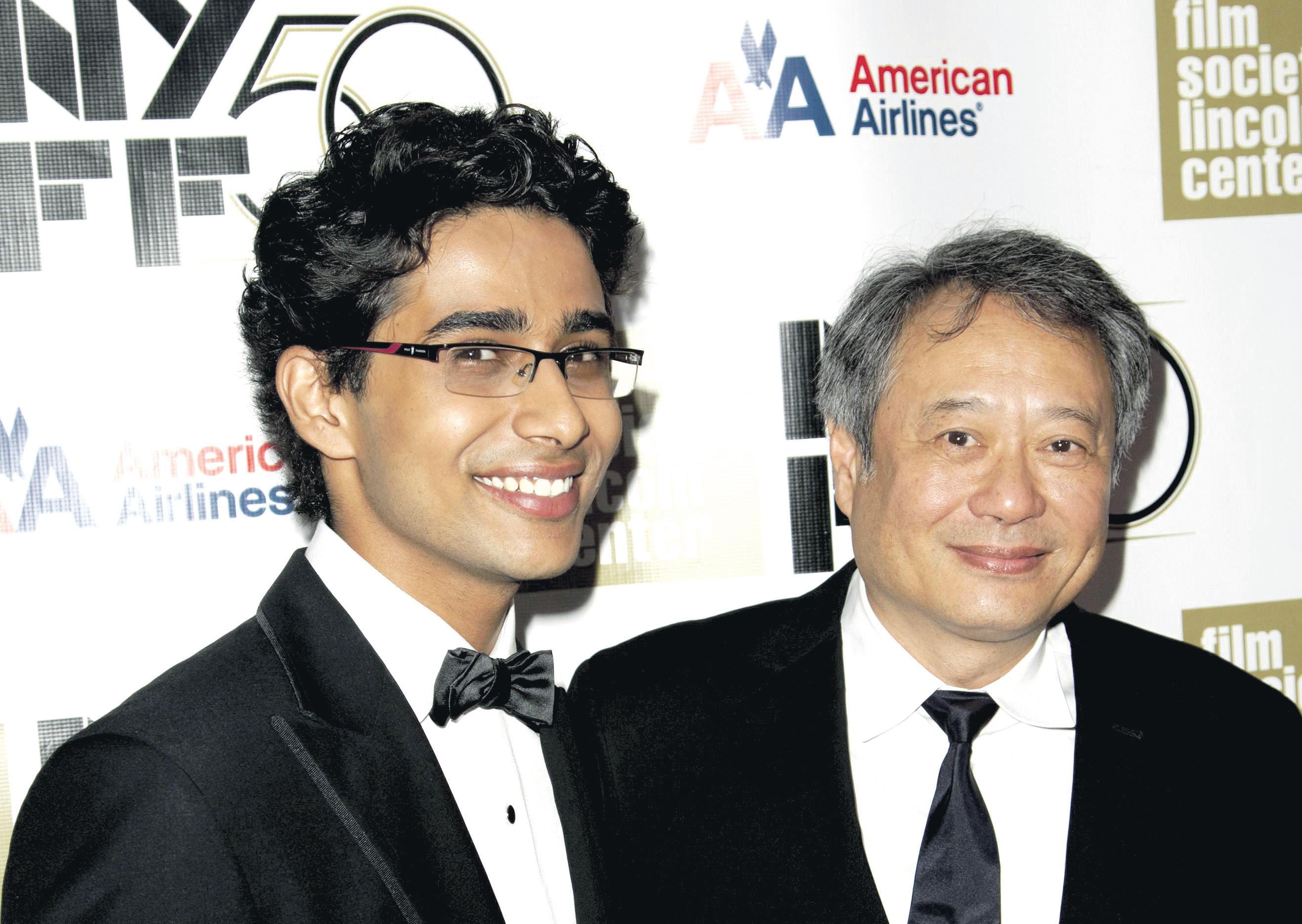
Before Sharma, the captain of India’s under-19 world Cup winning team and a fellow Stephanian, unmukt Chand, wasn’t allowed to sit for his first year exams because he was short of attendance. Later, delhi university permitted him to move to second year with the proviso that he would have to clear his first year exams along with the third and fourth semesters of second year.
Meanwhile, Life of Pi has been quite impressive in India, collecting Rs 19.5 crores in the first week. It was released in English, hindi, Tamil and Telugu, and in both 2d and 3d formats.
“Life Of Pi a must watch!! Its message will have multiple interpretations and will be open to post viewing analysis. That’s the fun of it,” filmmaker Karan Johar tweeted.
“ watching Life Of Pi second time in two days. Brought my daughter and her friends. Nice to see a full house and lots of kids. Fantastic movie,” Kapur tweeted.
Life Of Pi narrates the tale of a boy who is adrift at sea in a lifeboat with a Royal Bengal tiger after his family is drowned in a shipwreck.
Nair’s debut film Salaam Bombay was nominated at the uS academy awards for best foreign language film in 1988. her other acclaimed films are Mississipi Masala, Monsoon Wedding, The Namesake, New York, I Love You, among others.
Nair is the founder of Maisha, a centre in Kampala, uganda, that provides film labs and workshops for aspiring screen-
writers, directors, actors, technicians, and documentary makers from africa. and like most of her other offerings, let’s hope this one’s fascinating too!
Vidya Balan, Yash Chopra tribute at melb Indian Film Fest 2013

Vidya Balan will return to Melbourne as the ambassador for the 2013 Indian Film Festival of Melbourne, Victoria’s Minister for Innovation, Services and Small Business and Minister for Tourism and Major Events, Louise asher announced in Mumbai recently.
Vidya is one of Indian cinema’s most respected actors and a genuine box-office drawcard.
“Securing such a high profile actor as our brand ambassador adds to the prestige of the festival and Vidya’s attendance at next year’s festival will be sure to delight our local Indian film fans,” Ms asher said.
To be held in april 2013, the Indian Film Festival of Melbourne showcases the diversity and breadth of Indian film culture to Victorian audiences and will once again be delivered by Mind Blowing Films.
The Minister also announced that the Festival will pay a rich tribute to legendary film maker yuash Chopra next year.
“Mr Chopra had a deep relationship with Victoria given he was a Patron of the Festival and that he shot two major blockbusters in Victoria, Salaam Namaste and Chak De India,” Ms asher said.
Speaking at the event, Vidya Balan said she was delighted to be the ambassador for such a vibrant and exciting festival showcasing the best of Indian cinema. “Melbourne is like a second home to me and I look forward to being back,” she said.
Minister asher was in Mumbai as part eek, a program of activities to showcase Victoria’s cultural, creative er government is delivering on an election pledge to develop an Indian film festival and bring the best of Indian cinema to
Kareena Kapoor is over the moon, and it’s not just because critics have been giving her rave reviews for her performance in . It’s also because li Khan seems equally thrilled at her role and plans to throw a small party to celebrate the actress’
She’s been in the news this month, along with other family members (Find
“Saif is still in Lucknow, but he’s been very excited as he has been receiving messages from our family and friends ,” said an
e was happy about the fact that this is
ABHILASHA SENGUPTA brings us up-to-date on what’s hot and happening in Bollywood
my first big film after our wedding and we have broken the norm to prove that even married women can get the box office going,” she added.
a decade after again plays the role of a prostitute in Talaash, and is delighted that the audience has accepted her in this role.
“It’s quite ironic that I did I was 22 and I did Kareena said. “It is easy to do song and dance, as though it is a part of me and my uSP, but I feel really blessed to play something like this on screen”.
as the happy couple are thrilled, Saif plans to make the occasion special with a small party for friends and family. Not a bad start for a month-old marriage and wonderful to see that supportive filmi husbands still exist.
his is a strong presence in Bollywood’s teeming industry, and he’s also one of its most bankable actors. after the success of akshay Kumar’s films Housefull 2 and Rowdy Rathore, the actor has catapulted into the Rs. 100 crore club. But despite all the hype, the actor remains disarmingly modest about his success and performance. and although akshay feels the pressure of success, he says once a film releases, he doesn’t dwell too much upon its box-office performance.
“I feel pressure when the film nears its release, but after that if it doesn’t work, I am on to the next film. I also don’t take a big hit too seriously, because the next Friday you have to go into the same circle... you never know what will happen. I just take it as it comes. I just work and entertain,” said akshay.
The actor made his Bollywood debut with 1991 film Saugandh and went on to acquire the tag of ‘Khiladi Kumar’ for his inclination towards action. But since then, akshay has veered his focus to comedies.

“after Khiladi 420, I stopped doing action movies because I got married. I just wanted to work on comedy, romance and everything. Being a father and a husband, a man has to settle down a little bit. Now my son has grown up, I want to go back to action,” said the actor, who is married to actress Twinkle Khanna and has two kids - aarav, 10 and daughter Nitara, who was born in September.
Rowdy Rathore signified akshay’s return to action, his first love, and his new film Khiladi 786 will see him in a similar avatar. “It is a great thing to return to action. It is my love. I have been in this industry because of action. I have tournaments of action.
I have my own personal gyms. action is what I am. It’s because of action that I am here,” said the 45-year-old martial arts expert.
over the years, the genre of action has been mixed with comedy and successfully presented to the audience through hit films like Dabangg, Ready and Rowdy Rathore
and there’s a good reason for this, reveals the talented actor. “The audience wants this from me. They want overthe-top action (movies). These are their demands and we have to try and give it to them. The films are made for everybody. Not only masses, but classes also love this,” said akshay.
he added that now the overseas
audience wants to see one actor as a master of all - whether it is action or comedy. The past formula of having a separate comedian alongside an actor in a film is long gone.

“People want their actors to do comedy too. They want one solo hero and want to see everything in him,” he said.
well, looks like the perfect description of what does best. So will the action hero-cum-comedian lives up to his reputation in Khiladi 786? Let’s wait and see…..
Talaash is a true thriller
e’ve come to expect nothing less aamir Khan, and once again, we are not disappointed. Taalash released recently and has been lauded not just by critics and the industry, but also by the aam junta The thriller is expected to have raked in Rs 15 crore on its opening night. aamir’s wife, filmmaker Kiran Rao is very happy with the movie, as she says it offers something for everyone. “It is my kind of film and I really liked it,” the 39-year-old said.
“we just hope that people also like it. The story is such that everyone will get something in it. It is emotional also, so it should touch the audience and will lead them to think as well,” she
irected by Reema Kagti, is a thriller and also stars Kareena Kapoor, Rani Mukerji and Nawazuddin
What’s Amitabh thinking here?
Send
Last issue Caption Contest winning entry
What are Big B and Anil Ambani saying to each other at Bal Thackeray’s funeral?

We each may own mumbai in our own way, but ultimately we go like everyone else.....
 Monisha Lahiri Kolkata, India
Monisha Lahiri Kolkata, India
monisha wins a CD of new Hindi film Jab Tak Hai Jaan

tracks that she had remixed herself.
sked to describe her husband in a few words, Kiran’s response was to the point: “a good human being and very talented at the same time.” Nuff said and well said! oa
She may be miles away from ollywood, but socialite-cum-actress-cum-singercum-entrepreneur-cum-heiress Paris ilton got into yet another avatar on her recent trip to Goa. and she did a good s deejay at the Sandkastle Music Festival of India Resort Fashion

), Paris knew what was needed to get the crowd swinging and swaying. She began with the popular Gangnam Style, peppering the hit number with the words, “we will rock this night Goa!” The crowd went wild as Paris kept them grooving, dressed for the occasion in a metallic knee-length dress. It was her second J, but she certainly kept the party going!
“So Goa how are you feeling today, all set to rock the night and get grooved?” she asked before starting the performance and continued by adding, “I love you people. you guys are just so amazing, I love India and the country rocks!”
The 31-year-old also played
People from as far as Mumbai, delhi, hyderabad and Chennai, and from countries like Ireland, New york and London attended the show, enjoying it in their own ways. Paris finally ended the show, promising to return and tweeted: “wow! what a fun show! had the best time performing tonight! So happy that you all loved my set! Loved seeing you all dance! yes (sic).”
The heiress also walked the ramp for finale designer Shane and Falguni Peacock on the trip. She admits to being fascinated by Indian fashion. “whenever I visit, I make sure to buy something for myself. Last time I tried a sari,” she said.
“I love everything that is beautiful and this is the reason why I love India for its vivacious and bright colours and designs”. and naturally, Paris took time out to indulge in her favourite occupation –shopping. “I bought some spices. I love Indian food. I also bought trinkets from the local market here for my family and they are just beautiful”.
I’m sure Paris’ trip has boosted the country’s retail economy…
nswera to ESSuG ?who
Aamir Khan never ceases to surprise viewers.
In Talaash, he does so quite literally. The complex screenplay, succinctly written, interlays smoothly police investigation with personal emotional turmoil of the characters, making Talaash a nail-biting thriller.
The plot, about a police officer Surjan Singh Shekhawat amir Khan) investigating a high profile case of film star rmaan Kapoor’s accidental death, keeps you riveted. longside the main plot, one gathers that Shekhawat and his wife Roshni (Rani Mukerji), have lost their eightyear-old son Karan in a freak accident in a lake, for which Shekhawat blames himself and lives in guilt.
his investigations constantly lead him to Kareena Kapoor, a prostitute with a good heart, who acts as the ace informer for Shekhawat. Kareena as Rosy has shades of her earlier Chameli, although she makes a conscious effort to be different. She is effective and convincing, touching your heart with the innate goodness of her character, in spite of her circumstances.
The mystery shrouding the case unravels gradually in a carefully written tight script, with no loopholes. The film is entirely unpredictable, not conforming to the usual approach to thrillers in Bollywood. This one is clearly different and keeps you guessing till the very end.
FILm: Talaash

The climax brings you to the edge of your seat, but leaves you satiated. as the case unfolds, you get your answers from the characters on celluloid. But clearly, Reema Kagti and Zoya akhtar, the scriptwriter duo, give you much more than just that. They take you through a complete self-exploratory journey and bring you back replete with answers. Farhan akhtar’s dialogues in colloquial parlance are witty and unleash several underlying messages. Ram Sampath gives an apt background score, in keeping with the flavour of the film and if anything, only enhances the viewer’s experience. Music in the film otherwise is nothing to write home about, but you’re definitely not complaining. The plot and performances leave no room for frivolities.
Rani Mukerji in her de-glam avatar, is true to her character as the distraught mother. Nawazuddin Siddiqui as Taimur, the lame Man Friday in the brothel doing odd jobs, excels in a superbly written role. Realistic performances and getups of all the characters, add to the ingenuity of the plot.
The cinematography, though simple, captures the essence of Mumbai. The locales of the city are wonderfully depicted, making these a character in the film rather than a mere backdrop.
devoid of the usual Bollywood masala and gimmicks, this one is a pure treat. aamir Khan’s fans apart, Talaash has the power to grip all cine-goers.
Troy Ribeiro
CAST: Aamir Khan, Rani mukerji, Kareena Kapoor, nawazuddin Siddiqui and Shernaz Patel
DIrECTOr: Reema Kagti
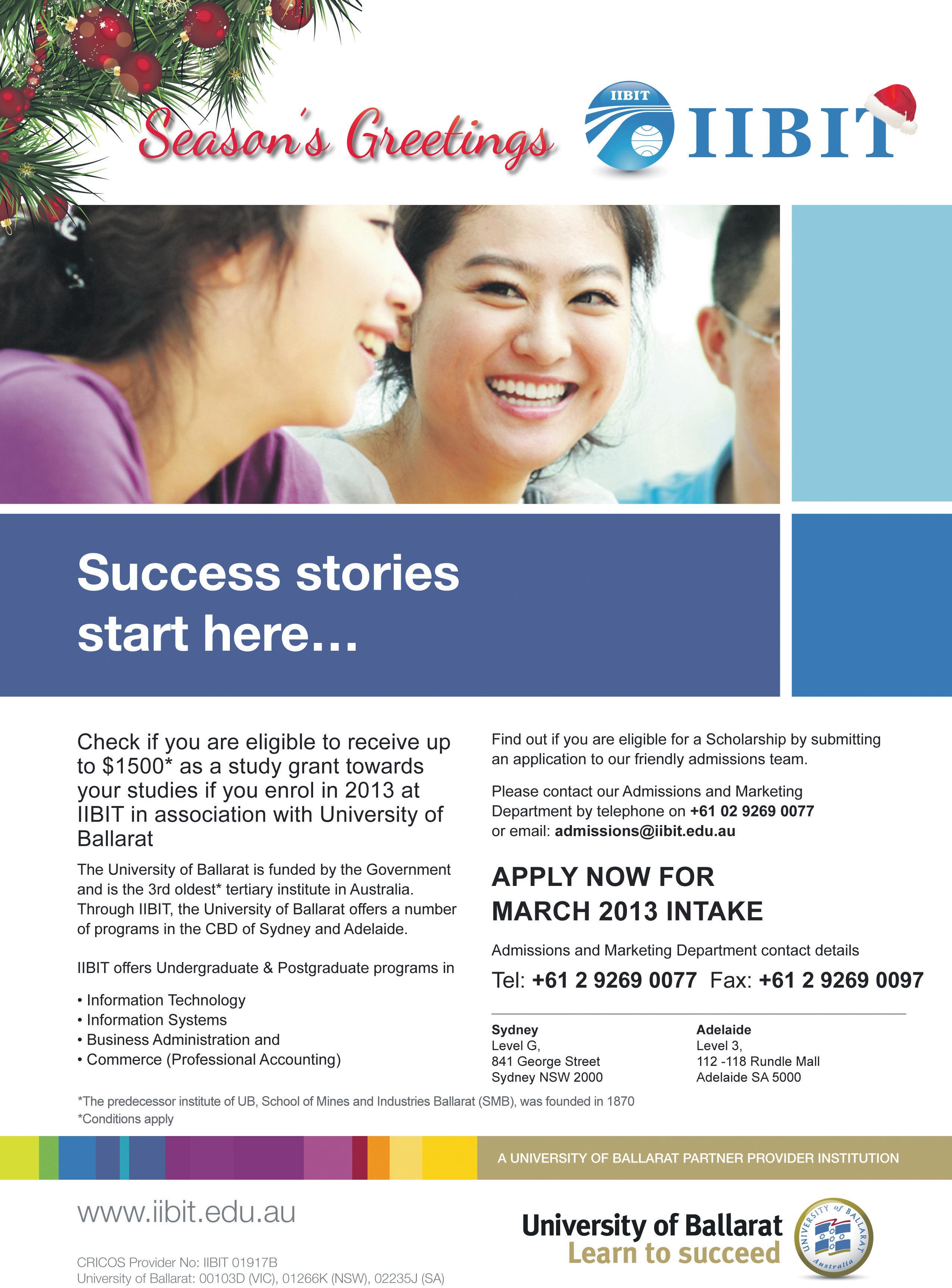

Agreat husband, father, brother, son and comrade – that was my late grandfather, Sri RM Sundaram. May his soul rest in peace. People grieve at the loss of loved ones in their life, and grieve we do quite inevitably. However, when one soul has lived such a virtuous and fulfilling life as my grandfather did, we can only celebrate his sagacity and hope that we encapsulate his nobility in our daily endeavours, letting memories of him subsist.
From a young age, my grandfather was an incandescent all-rounder, starting early with his many talents. Born on November 19, 1919 after World War I, he grew up in Mylapore and spent his youth studying in PS High School. It was here that Sri Sundaram discovered his passion for Indian classical music, a part of his education under the tutelage of Sri Koteeswara Iyer, one of the greatest composers in the history of Carnatic music and most familiar with rasikas of the art form.
My grandfather’s determination and passion for this style of music was evident in his actions.
In an interview conducted by his nephew Mohan Santhanam, my grandfather was asked how often he would go to his music lessons.
To this my grandfather simply smiled and stated, “I actually used to skip games and sports and go to Koteeswara Iyer’s house in the evenings, twice a week!” He was nevertheless, the opening seam
bowler in his local cricket team; a testament to his natural athletic abilities.
In 1938 at the age of 19, Sri Sundaram had the honour of co-writing Sri Koteeswara Iyer’s book, Kandhaganamudham – a collection of kritis or poetry pieces from the great composer in the 72 melakarta ragas of Carnatic music. In the introduction to the book, Sri Koteeswara Iyer acknowledged my grandfather as having propagated his kritis through his melodious voice which brought the audience happiness and appreciation for this style of music.
Sri Sundaram’s musical knowledge extended beyond his vocal abilities. In the mid1940s he decided to explore the world of Carnatic music further, and conducted a thesis surrounding the importance of music in Indian classical dance. Paying respect to my grandfather as he could not be present at my sister’s arangetram (a Bharatanatyam dancer’s debut performance), my cousin and I had the privilege of singing Varana Mukha, a famous
kriti of Sri Koteeswara Iyer, and the first composition that my grandfather had ever learned.
Aside from being highly musically inclined, Sri Sundaram also showed expertise and knowledge in other disciplines: he obtained certificates in Radio Engineering and Paramedical Practice. Circa 1947 he collaborated with his maternal uncle Sri N Ramakrishnan (exMP Rajya Sabha) to establish a pro-bono medical dispensary for the disadvantaged, attending to patients’ immediate medical concerns and needs. However, the height of my grandfather’s philanthropic feats was 30 years as a social worker at Pammal Leprosy Clinic, Chennai under the auspices of the Madras Christian College, Tambaram. Here, he treated those affected by leprosy, a fatal epidemic of the period. To most, witnessing such illnesses on a day-by-day basis would cause fear and desperation, but my grandpa showed fortitude and bravery in assisting those in dire physical straits.

A man of his word until his
demise on November 12, 2012, my grandpa continued wearing khādī (hand-woven or handmade) garments only. This was nothing but a true act of patriotism and love for his motherland. I recently discovered my grandfather was a freedom fighter when India was under British rule, and a strong supporter of Gandhiji’s movement for independence. My grandfather committed his life to social work and freedom fighting, while maintaining his passion for music. He never expected any kind of monetary incentives for his services, and only believed in alleviating the sufferings of others while following the Gandhian way of life.
Sri Sundaram’s offerings to this world did not end at his passing. As a final wish on his demise, my grandfather kindly and most humbly requested that his body should be donated to the Madras Medical College Anatomy Labs. He will be missed, truly and greatly.
 Bharathi Sriram
Bharathi Sriram
A respectful grandchild pays homage to the life of an exemplary person







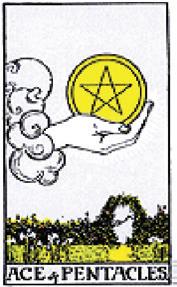



It is important that you are very firm about any plans that you have, and not allow anyone to come in your way. Remain strong and determined in what you desire. The cards indicate that you need to be very meticulous when it comes to any business dealings this month. Check the facts, details and wording before you sign any documents. Romantically, there is a strong chance of meeting a fire sign which can turn into a long term love.
you will be thinking of taking a nice long holiday. you are particularly fond of water, and the cards indicate that you will be close to it. Make sure that you allow people to prove themselves to you. There are also a lot of changes around your work life and you are bursting with ideas. you will be thinking about a past lover, and you may hear from them. you may need a blood test - do not delay.
The cards indicate that you may meet a lover of the opposite sex who will share your month of birth. you will be better off as friends. you will be called upon by an organisation to prove yourself. This month promises a time of great achievements and fresh ideas. you will also be full of energy when it comes to your own health and exercise routines. you may wait for a mail or document, which will arrive this month.
The cards indicate a time to be extra careful with financial matters. you may be tempted by a financial proposal, but make sure you read all the small print and not allow yourself to get carried away. There is a marked improvement in your life at home, you will be feeling better and happier about things. There is an indication that you may be feeling a little stressed-out this month, but allow yourself to say, this too shall pass!
This month the cards indicate a time to get away with a loved one for a well-deserved break. Some lucrative job offers may come your way, but you need to be able to accept them with full confidence. This month is all about advancement and promotions. you are in real need of rest, so there is an indication that you will need to go out less during the week. you will be looking at a new car, treating yourself?

This month you are being urged to start making plans and to stick to them as you have been sitting on the fence for far too long. There are amazing opportunities coming your way, but you have got into a lazy mode, and are unable to go forward. a strong connection with a married person must stop, as there is an indication of heartbreak. you are also thinking of buying a pet. Think carefully, as a dog is for life!
The cards indicate a time to treat yourself and spend on some well-deserved luxuries. you are feeling unhappy with your love life of late, and recently you have become bored and frustrated. There has to be some mutual interest and respect which is missing. The cards show a very good chance of a promotion or a new opportunity around you this month. Make sure you do not show complacency, as this opportunity will be very good for you.
The cards indicate that you need to make some firm decisions to change your lifestyle. There will be a new person entering your life, and you need to make sure you can accommodate them. you are quite set in your ways, but this lover will want a serious relationship. work-wise, if in business there is a wonderful opportunity, but you are advised to look at all angles and plan accordingly. Take it easy so you do not get ill.
This month your focus will be debts and money. you have a lot of strength and are willing to take on some new challenges. you will also be in a very optimistic mood with work and family. Even though there has been some difficult times lately, you will be able to keep the peace. There are friends around you who will be supportive and stand like pillars of strength when you need them. Look at changing your hairstyle.
There are some happy times in store for you, both at work and in your romantic life. There is a need to keep happy and smiling, and avoid feeling tense and angry for too long for no reason. Be particularly tactful when dealing with colleagues. when you are dealing with them, listen to their viewpoint. There are some difficult family members around you this month, so keep your patient hat on or you will get into arguments. Check your health.

This month you will be looking at a physical exercise and fitness routine, which will help solve many major problems around you. There may be some office politics, the cards indicate that you need to keep clear of them. There are major changes this month, with regard to relationships you will be making an effort to compromise which you do not find easy to do. your partner will be testing your patience and you may have some arguments. Keep cool.
pIsCEs
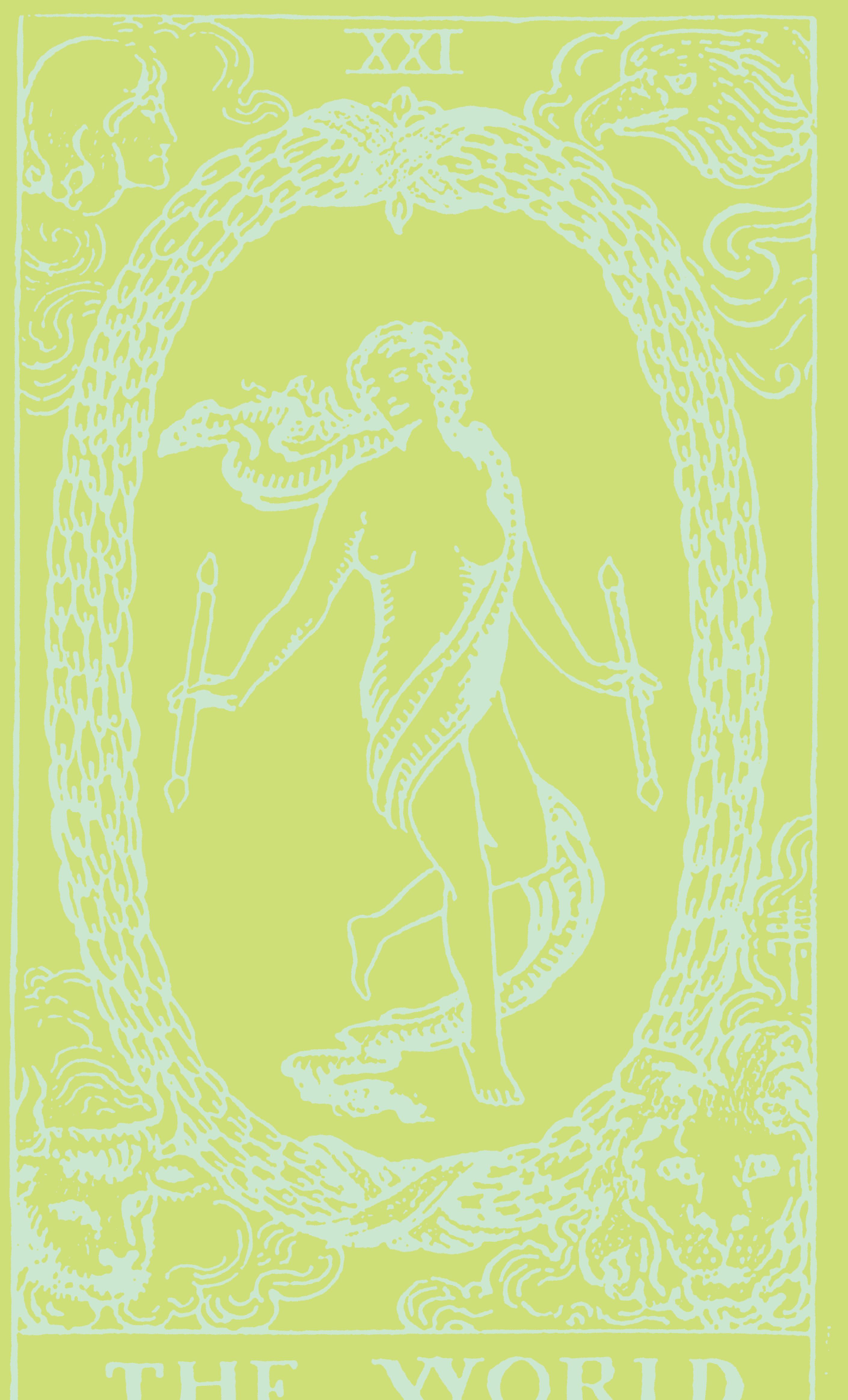
This month is a time for building old bridges and forgiving those who have upset you. There will be some health issues that are persisting. Nothing to worry about, just aches and pains seem to be bothering you. you will be thinking about buying a property or doing some house-hunting, as there is a chance you will be moving from your present accommodation. work will get better as long as you put in 100% effort in your daily regime.
Christmas is around the corner. Some call it the ‘silly’ season, but it is really the ‘C’illy season – a time for carols, cakes, crass consumerism and cards. Not the kind of cards you send out to convey goodwill towards fellow humans. It is the credit card, stupid! It is given a workout as if there is no tomorrow. In fact, some folks would wish that tomorrow, when the payment is due, never comes. Unfortunately for them money doesn’t grow on trees. Christmas tree included! The plastic panacea used to cure all shopping ills soon turns out a post transaction stress disorder.
The credit card, when it appeared on the horizon a few decades ago, had a noble purpose. Like the old saying ‘the way to hell is paved with good intentions’, it has, over the years, produced some dreadful debt consequences. Its original concept was to give its holder the convenience of not carrying cash without ever running out. It was to take the weight off the wallet, travel light and shop with security any time, any place. Now credit card providers literally lighten your wallet every time you pay a bill, charging a percent or two on top of the bill amount, besides an annual fee. You pay a fee to pay your money to someone! How fair is that? The points too, have become pointless over time. My return journey to India once cost 70,000 points. Now that will take me up to the local airport.
In the beginning, cards were issued by banks in bland colours to a band of select customers who had to pass through several hoops of credit worthiness. Soon retailers moved in followed by airlines, petrol stations, all and sundry. They are now offered willy-nilly. I have seen some women carry umpteen plastic cards, enough to recreate Michael Jackson. Sorry for showing disrespect to the departed; one shouldn’t speak ill of the dead. Talking about a living legend, Jane Fonda’s trim, taut figure is an all-plastic miracle and not from her well-publicised workout. The cat is out of the
bag only after thousands of women had shed several pounds (monetary) with their credit cards to buy her fitness fads.
Over the years, the credit card has evolved into a class system of its own with silver, gold and platinum types signalling the status of the holder. It has also taken on new avatars like charge and debit card - the darling of merchants who get their money once the card is swiped. Each swipe shaves a slice of your savings with silky smoothness. What swipe, the Y-gen may wonder. In its infant days, the card was placed on a metal cradle with a wringertype roller passed over it and a set of triplicate vouchers. The triplicate had an Indian aura since
everything over there still needs to be in triplicate. (Even our god system is Trimurthi).
Besides the one that offers permanent sanctuary in the US, there is a green card that does not cost you a cent. It is the Medicare Card, provided the service provider bulk bills you.

It may bulk up his bank account and even make you green with envy.
Over the years, cards have grown out of their swipe cradle and moved to hand-held machines with ‘PIN’ or ‘sign’ commands. I don’t like to be pinned by a set of numbers and PIN being a Pain In (the) Neck, I always opt to sign.
At my age with a poor memory, that is the only way to remember
who I am. Even this choice is now under threat. No need to sign if the purchase is under a certain amount. Just a wave of the card and away you go. Bingo! Can’t get easier than that.
If you lose your card someone can use it and smile all the way out of the shop shouting, “Start the car!” a la the Ikea ad. To assuage cardholders’ concerns, providers assure that they will bear the cost of purchases under a certain amount; some say $50 and others, $100. So if your December statement shows a number of $99.99 purchases, someone may have had a good silly season. You might have spread some goodwill.
Merry Christmas and a Happy New Year.
The plastic panacea used to cure all shopping ills soon turns out a post transaction stress disorder.

Over the years, the credit card has evolved into a class system of its own with silver, gold and platinum types signalling the status of the holder
As we get into the festive season, we realise that cards are a credit to no one
















































